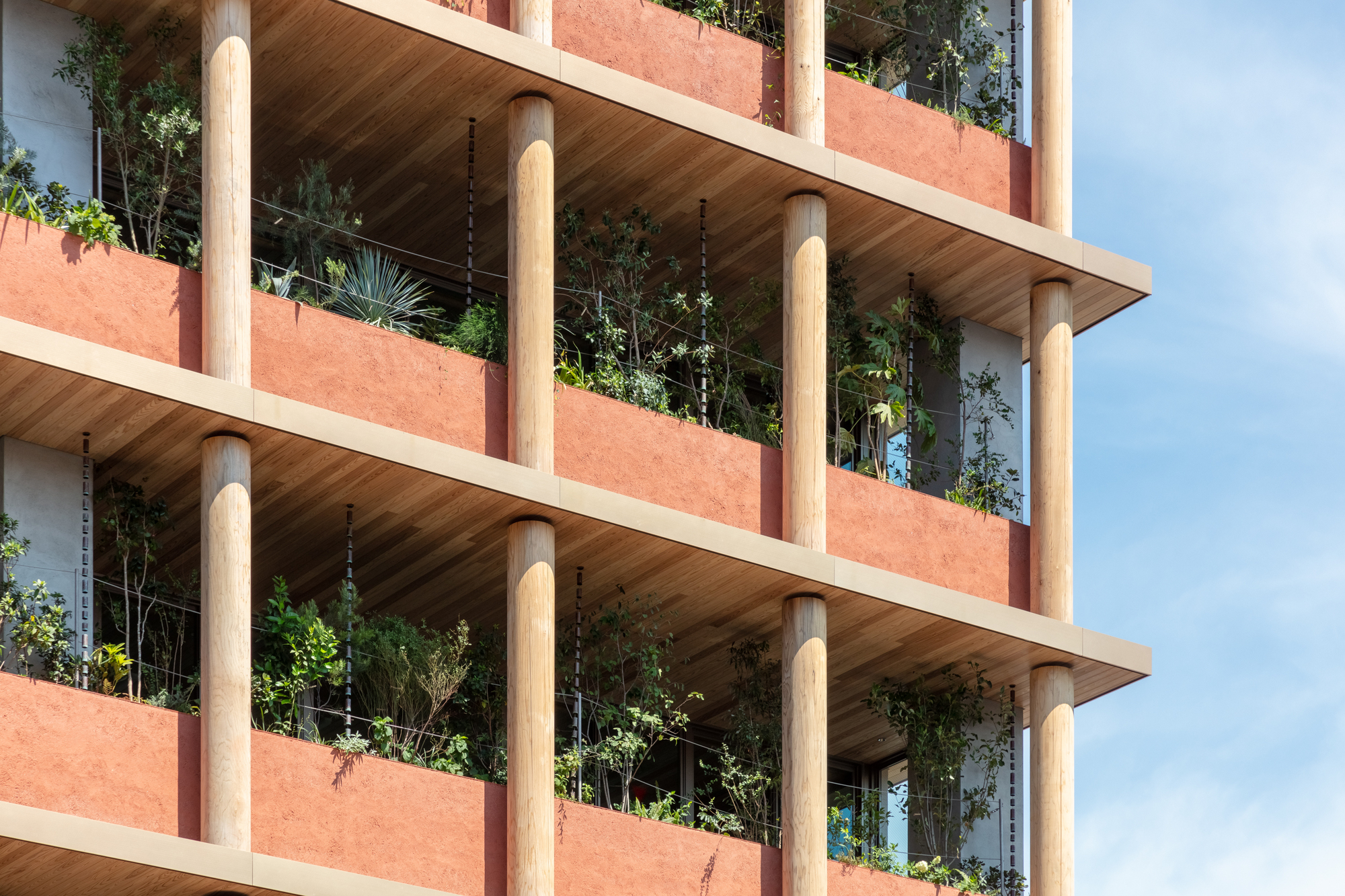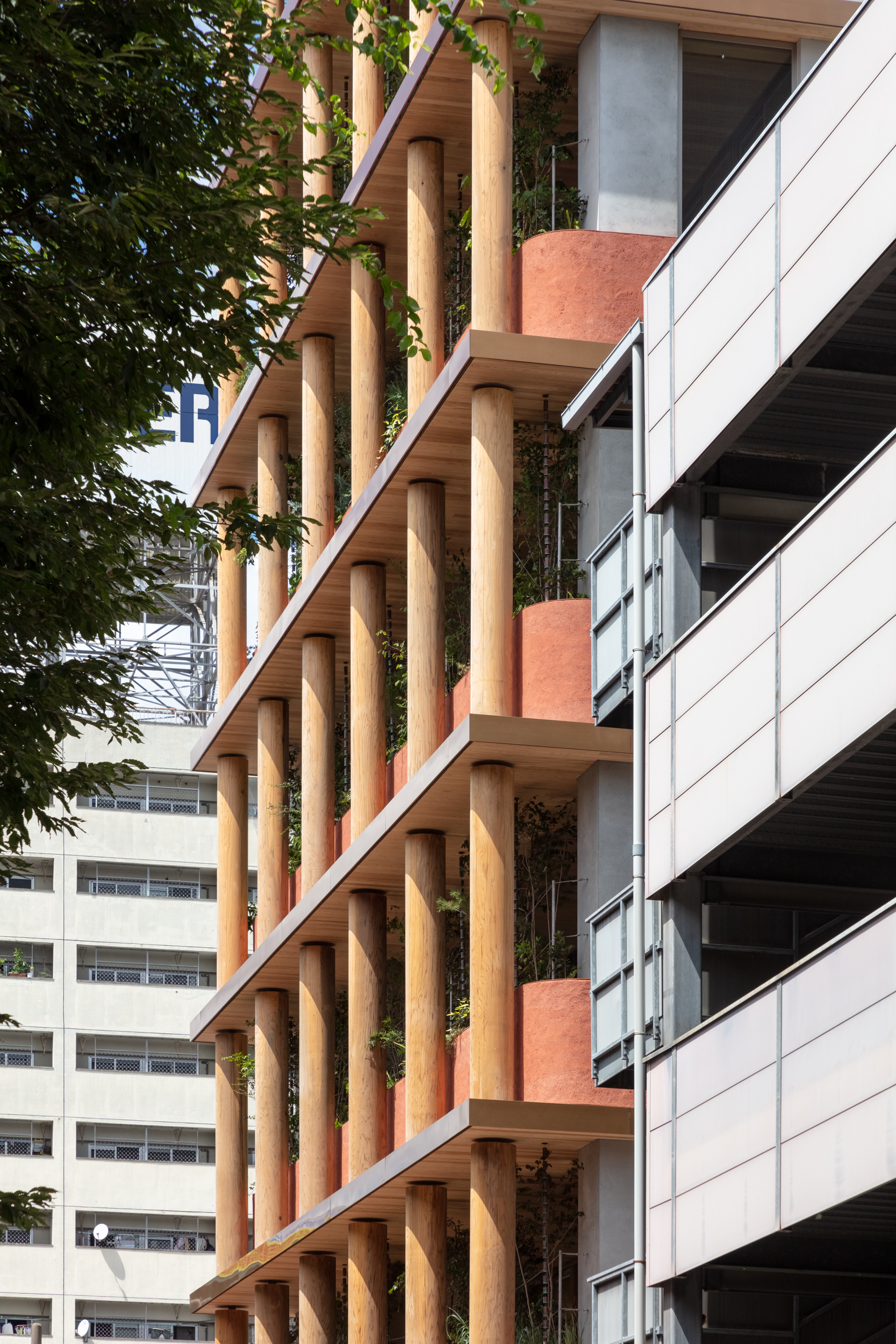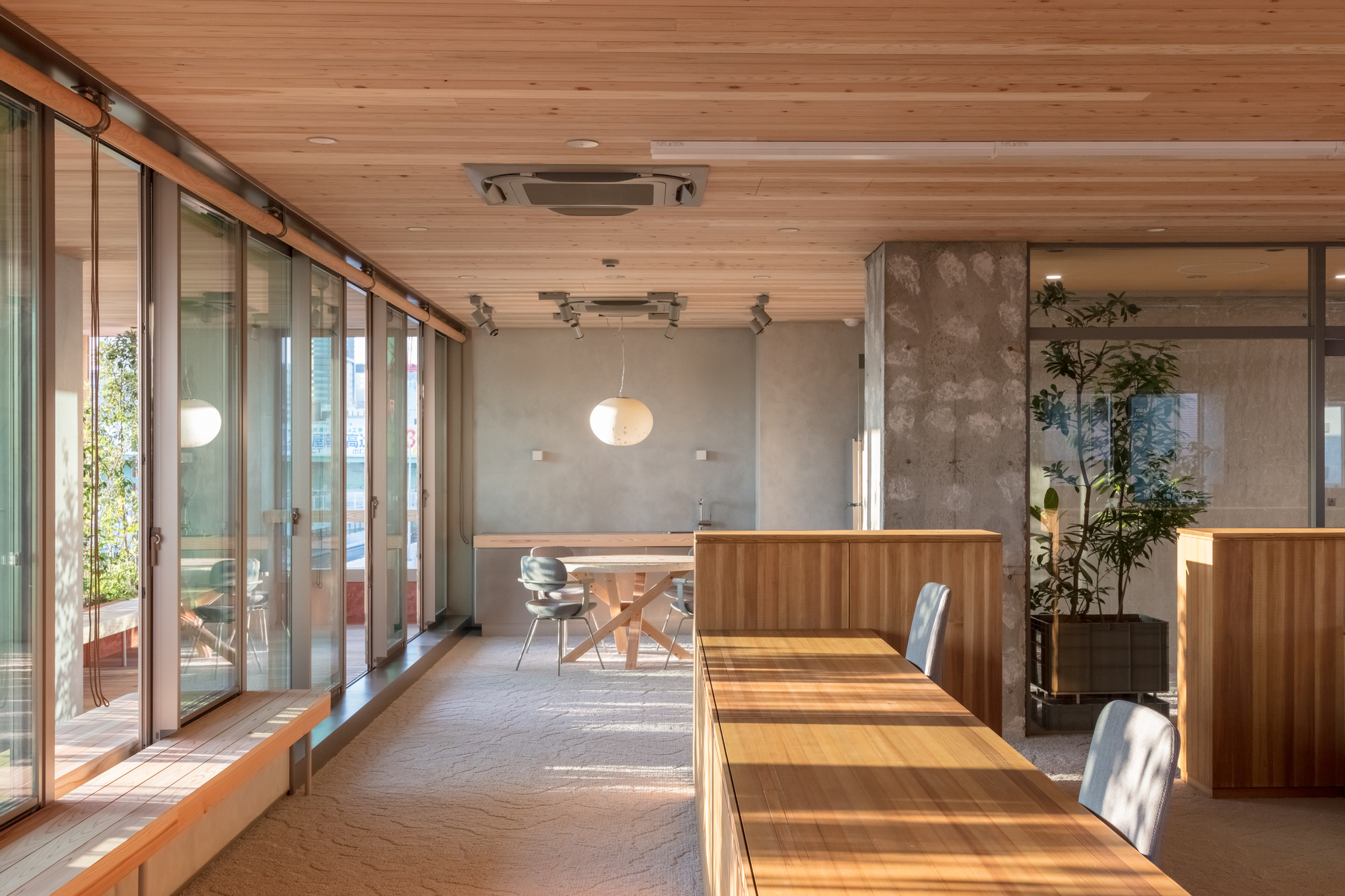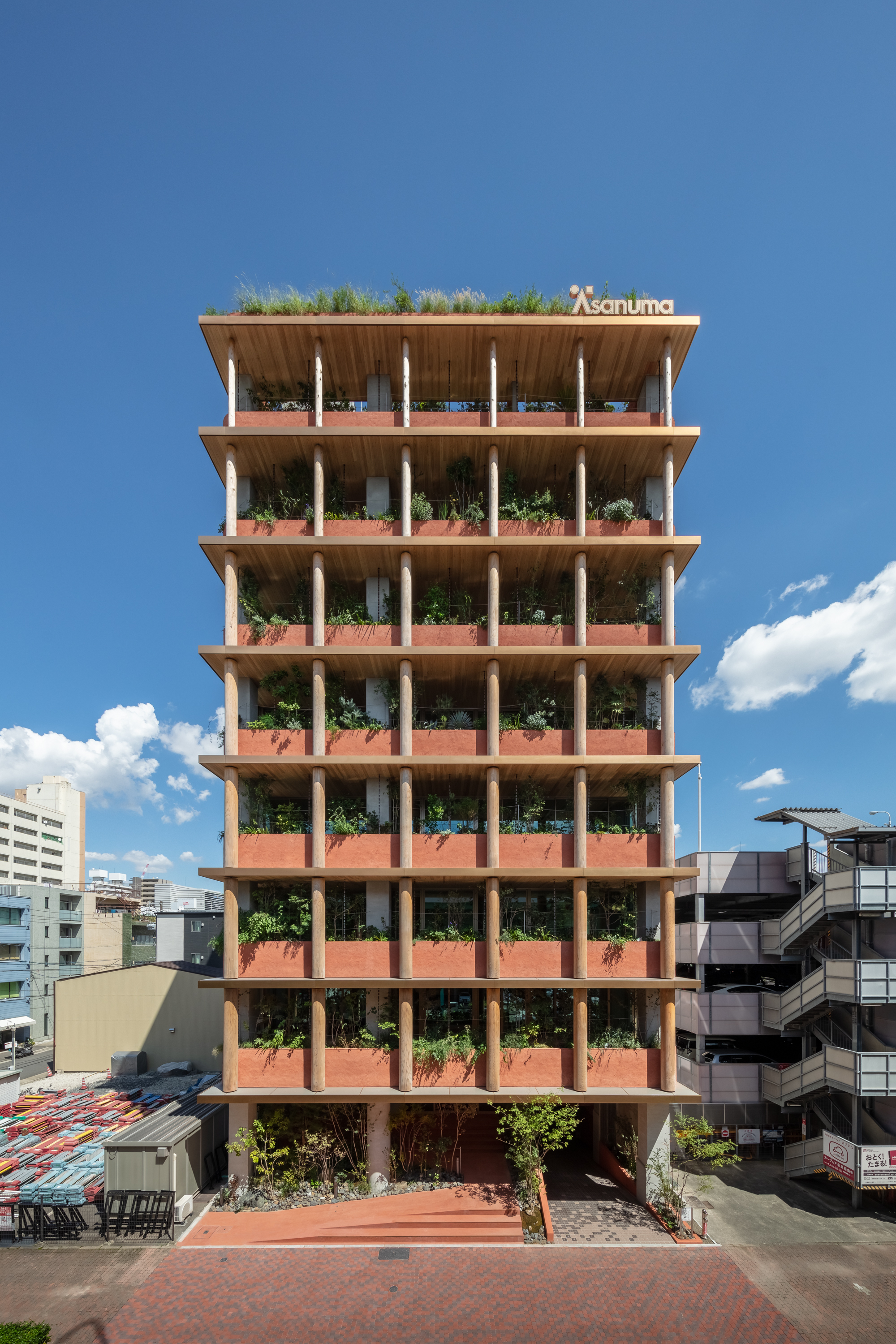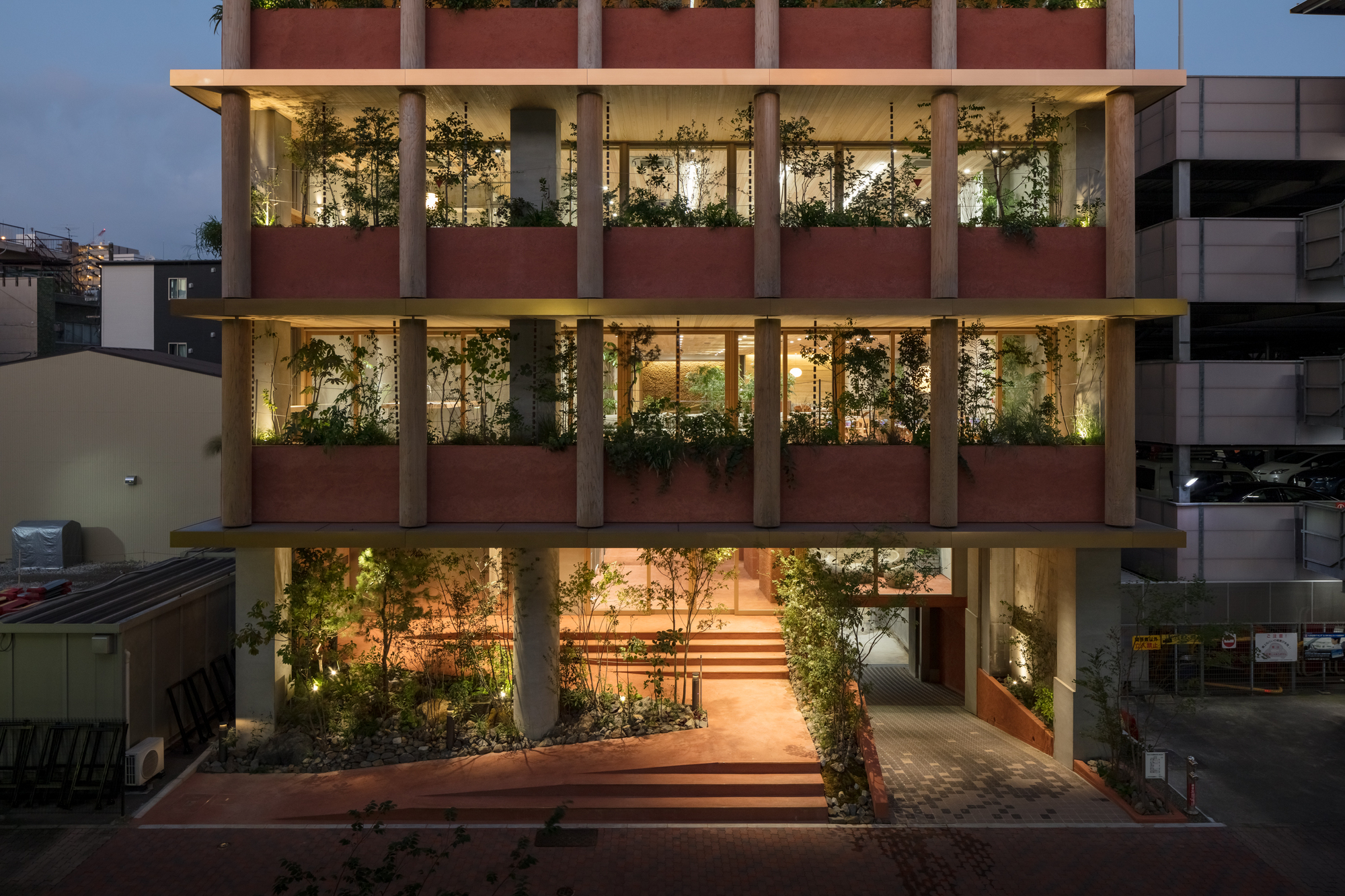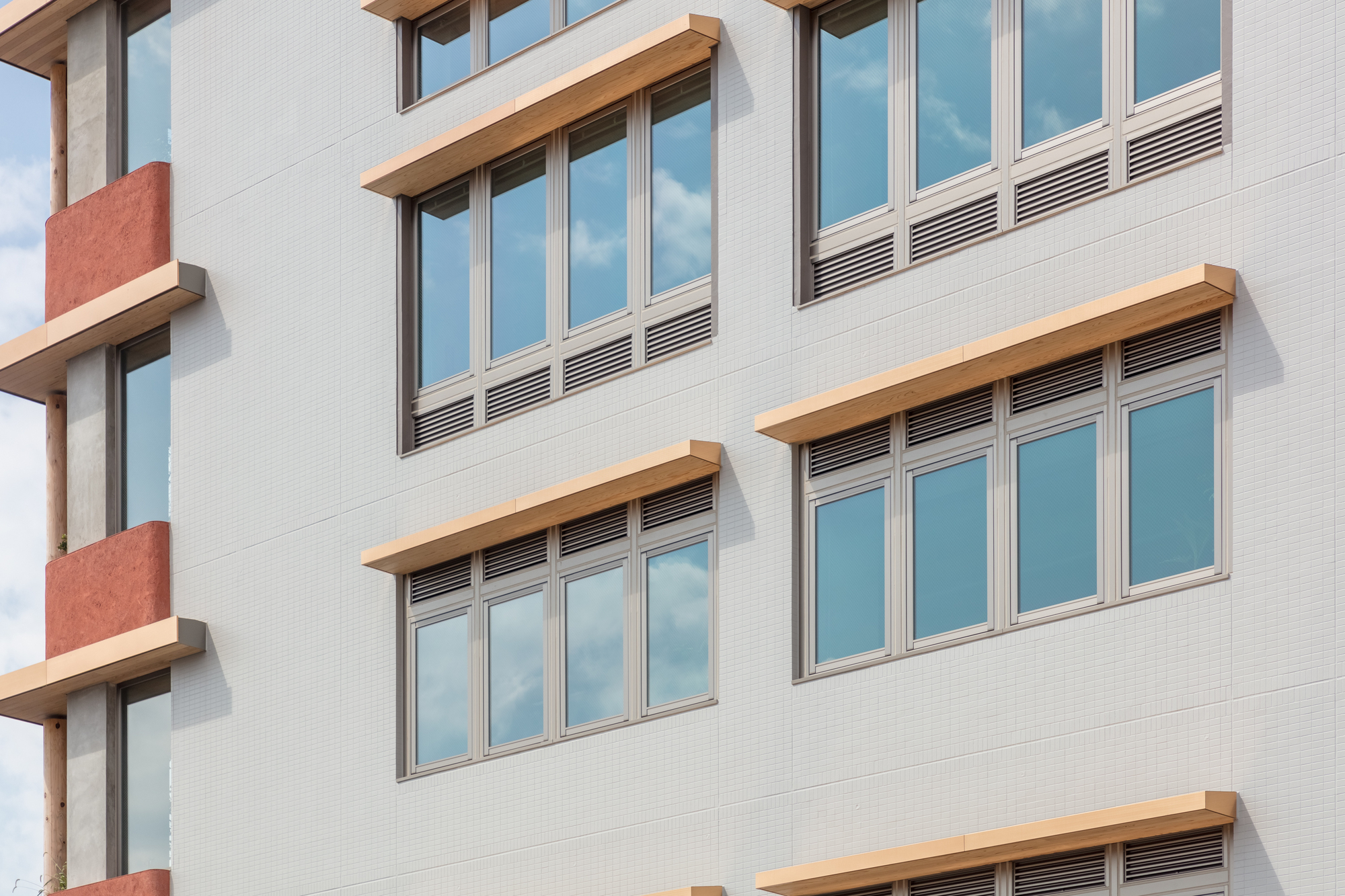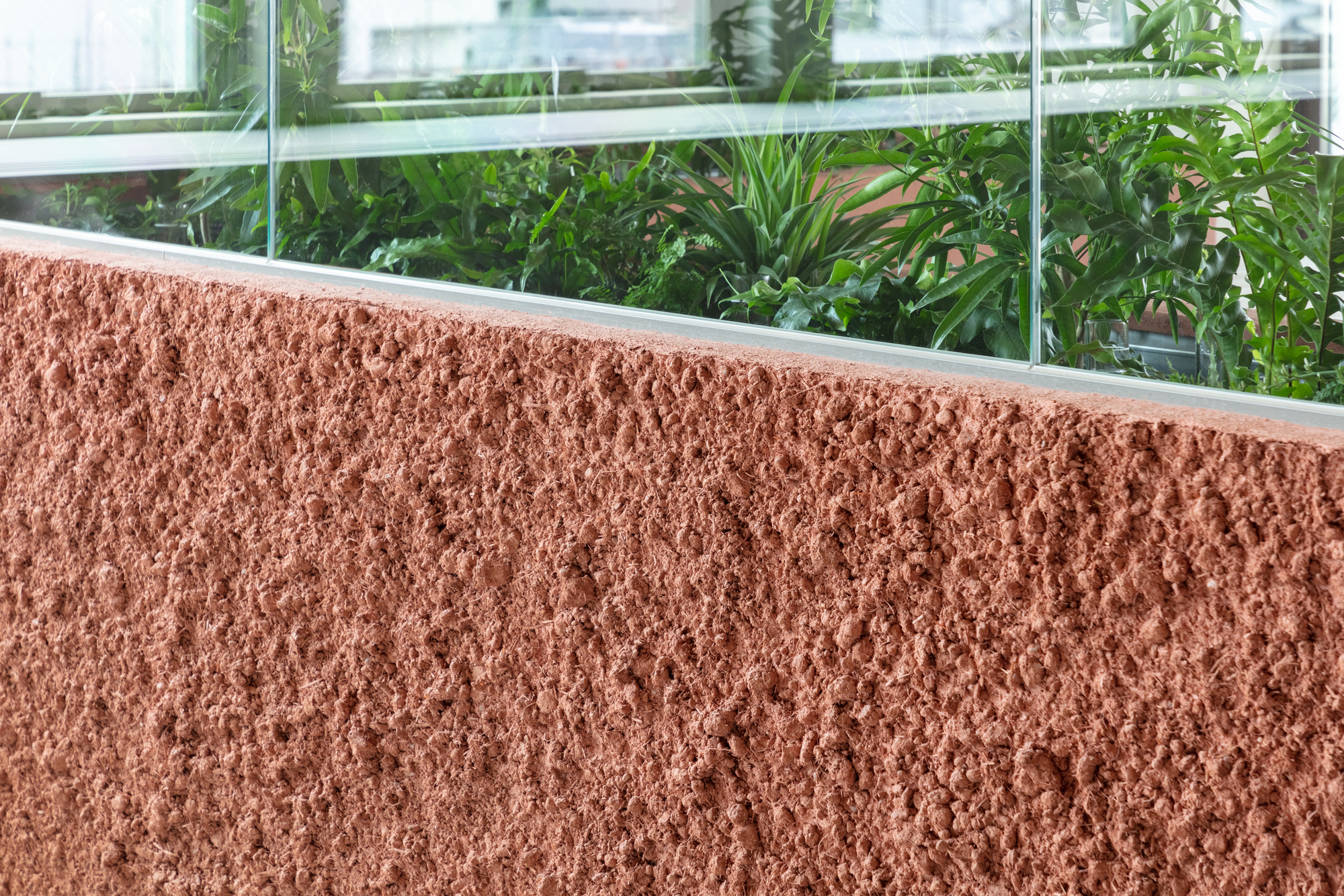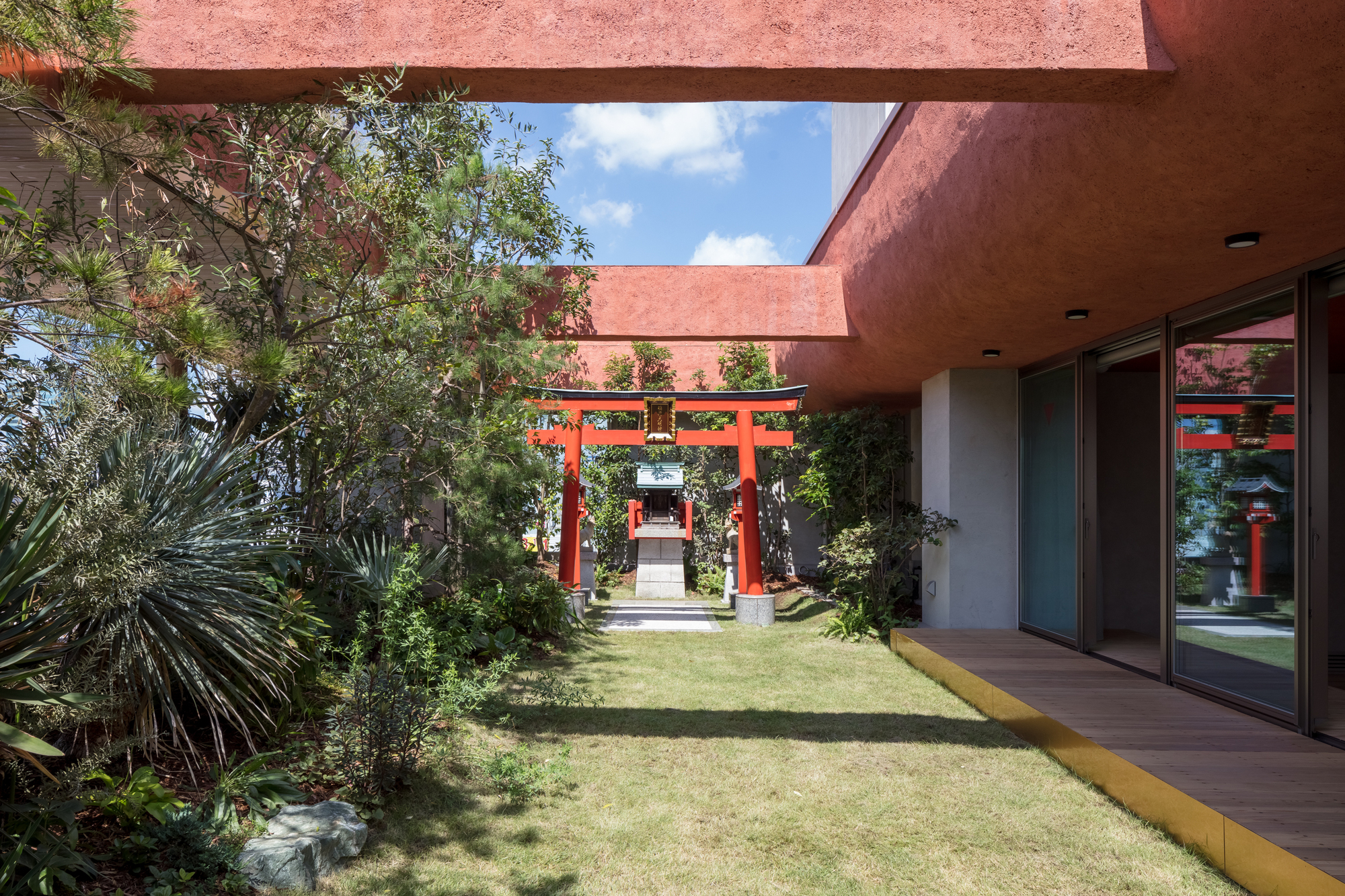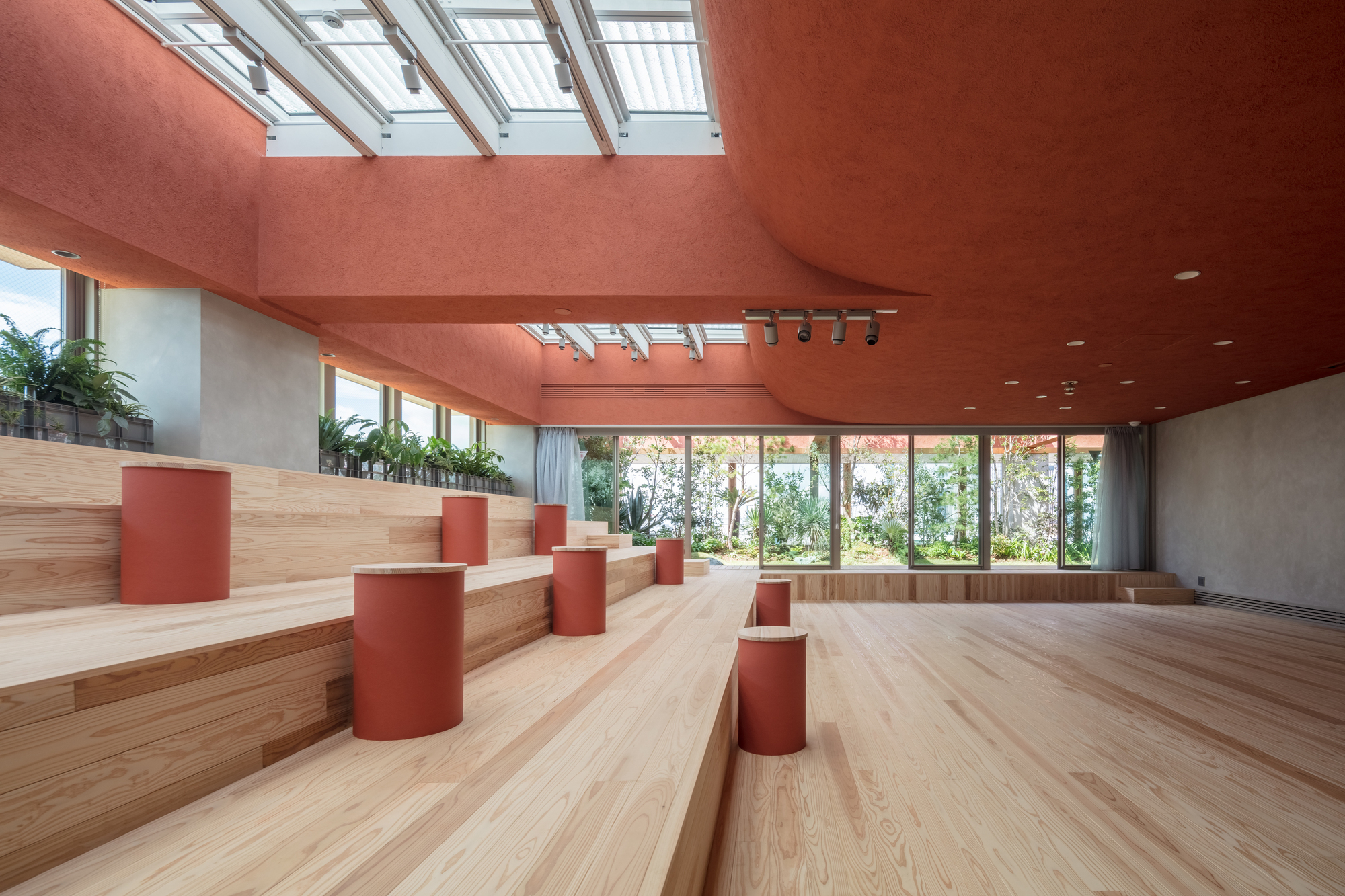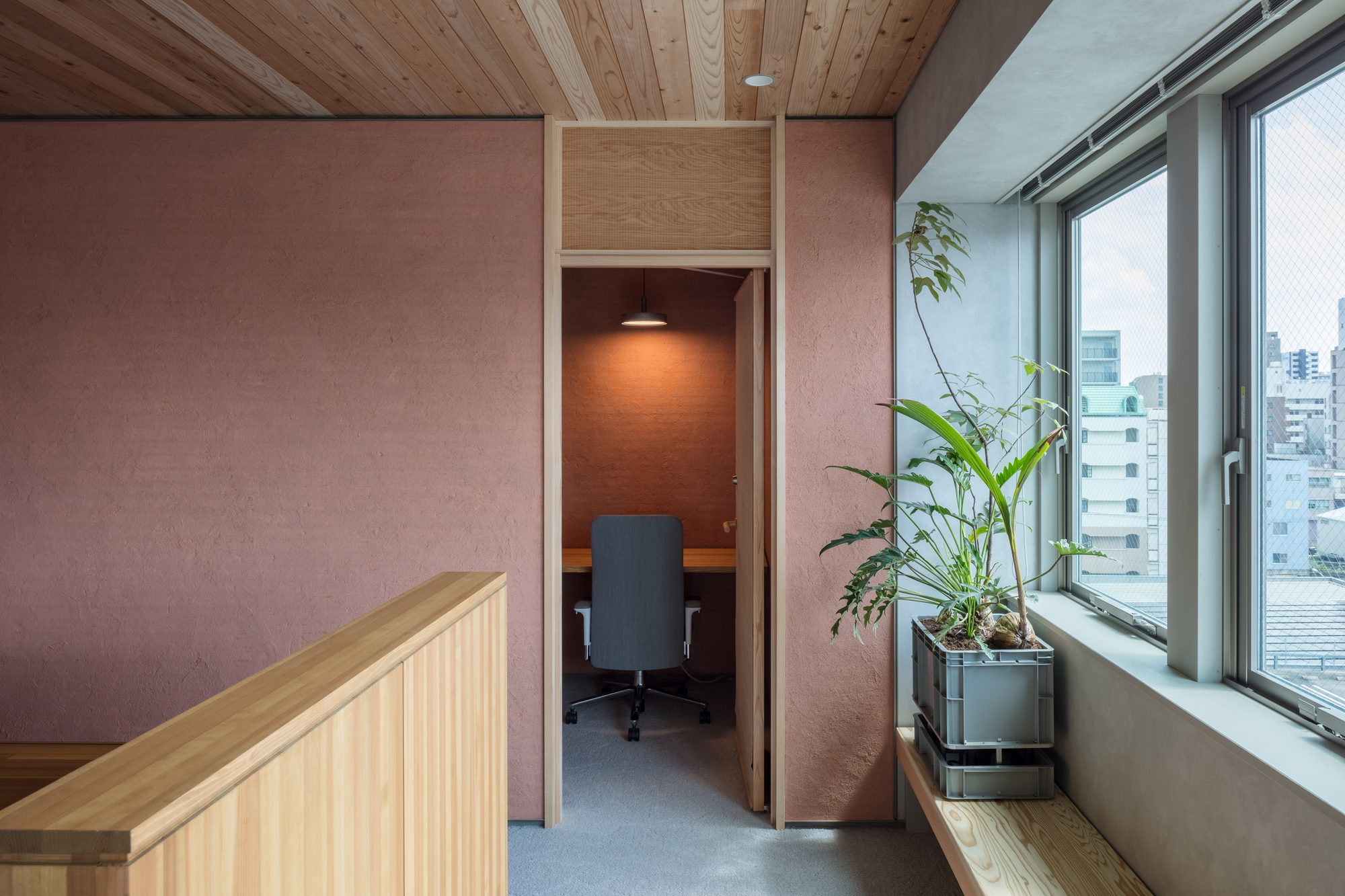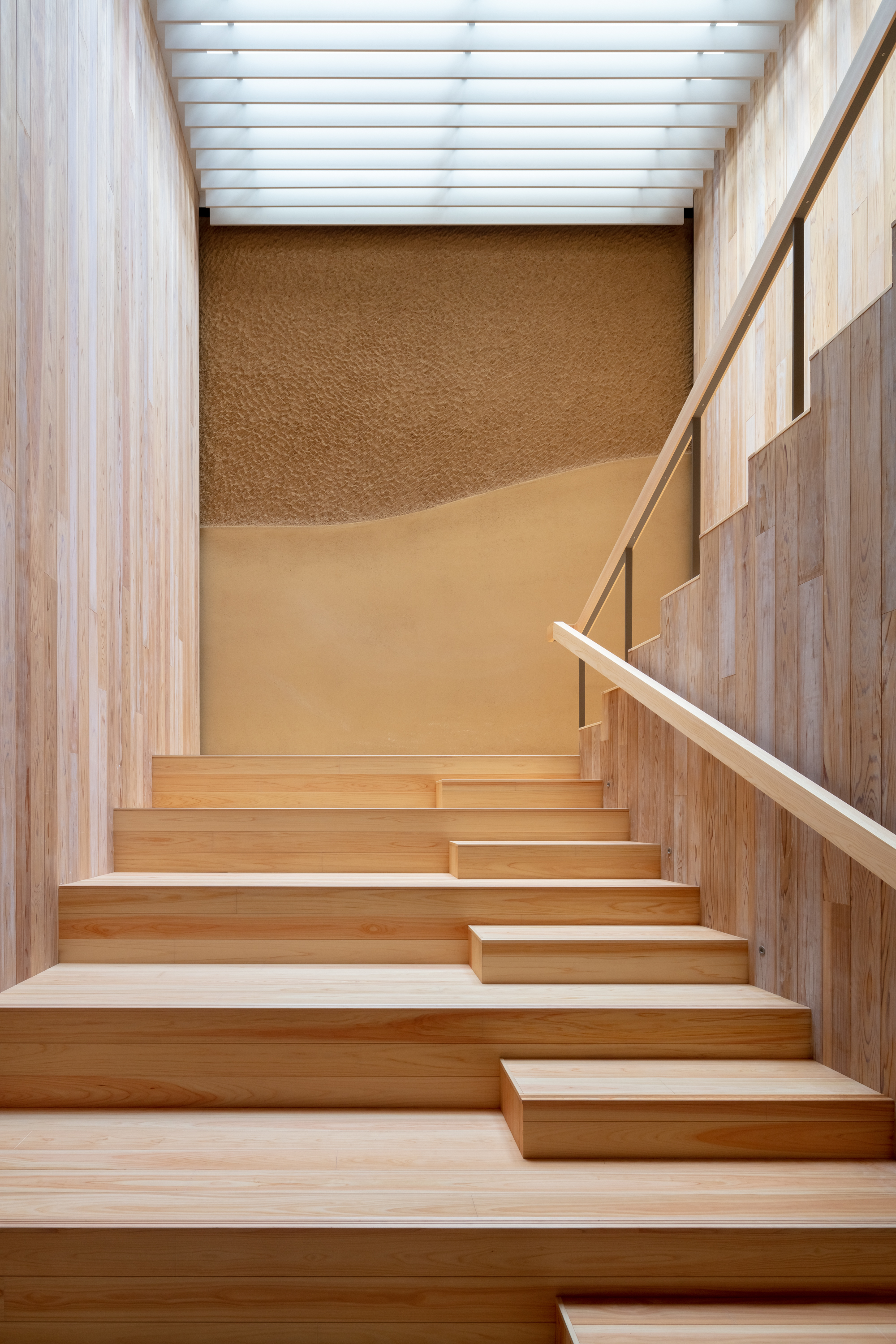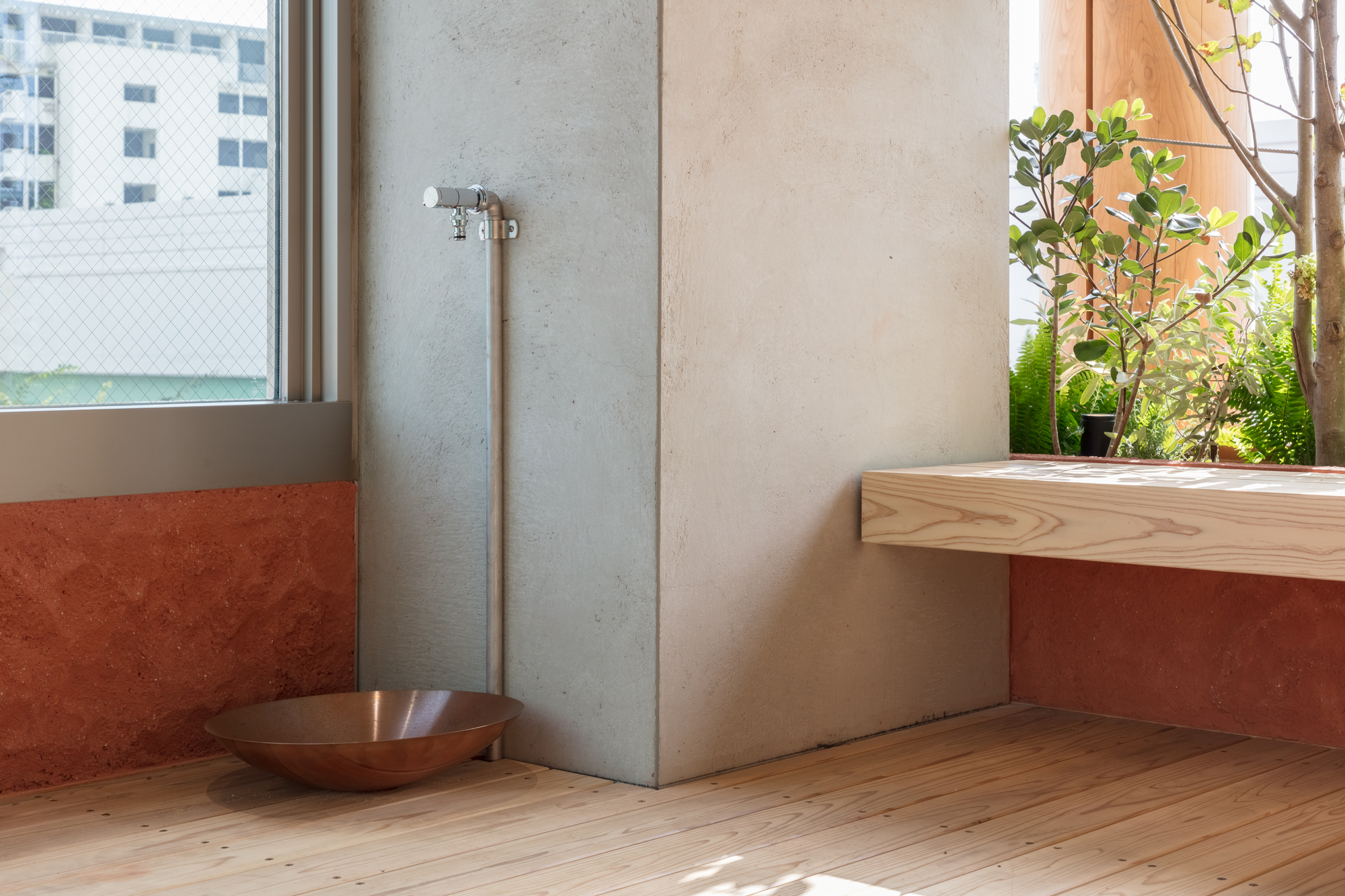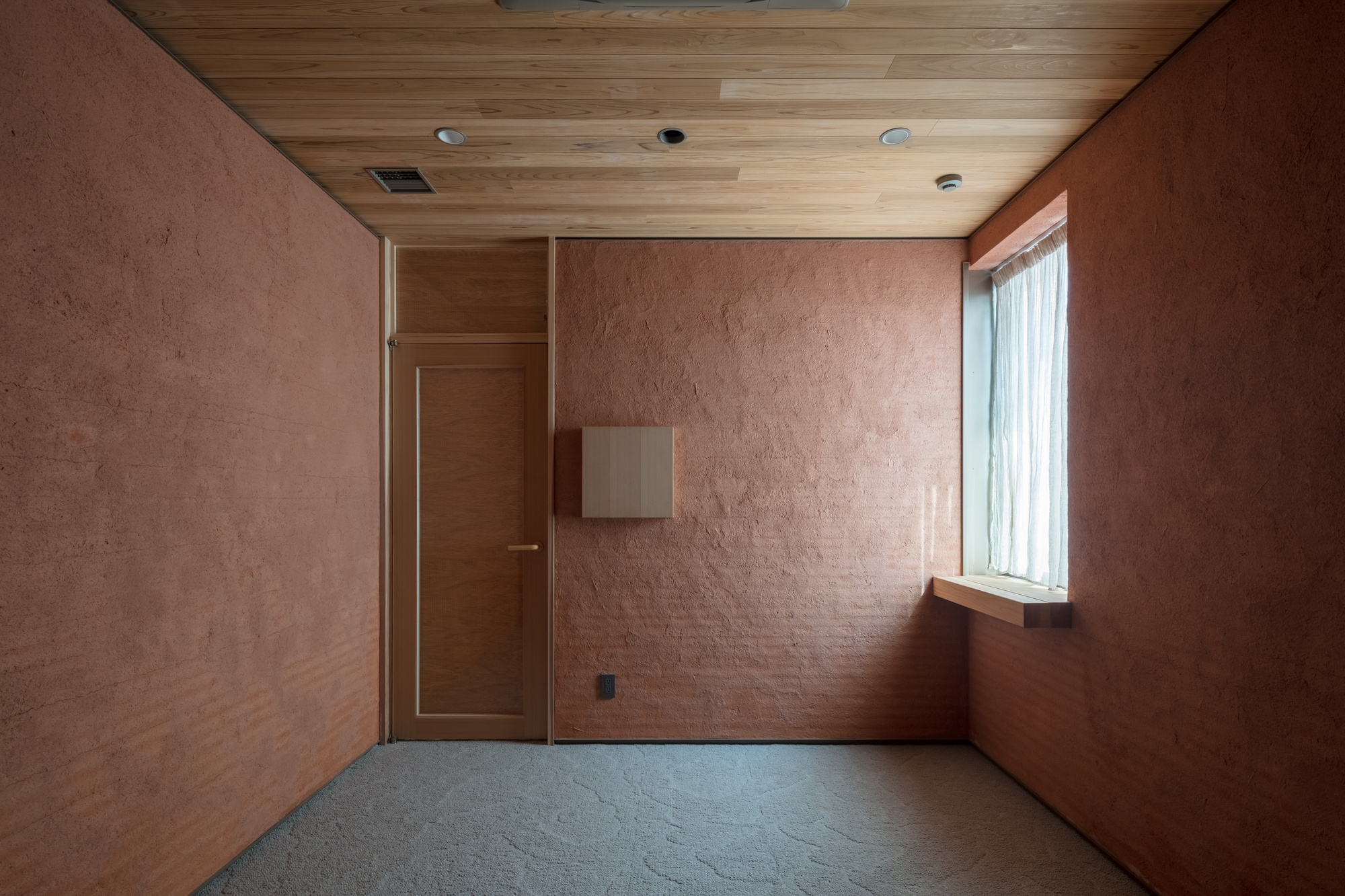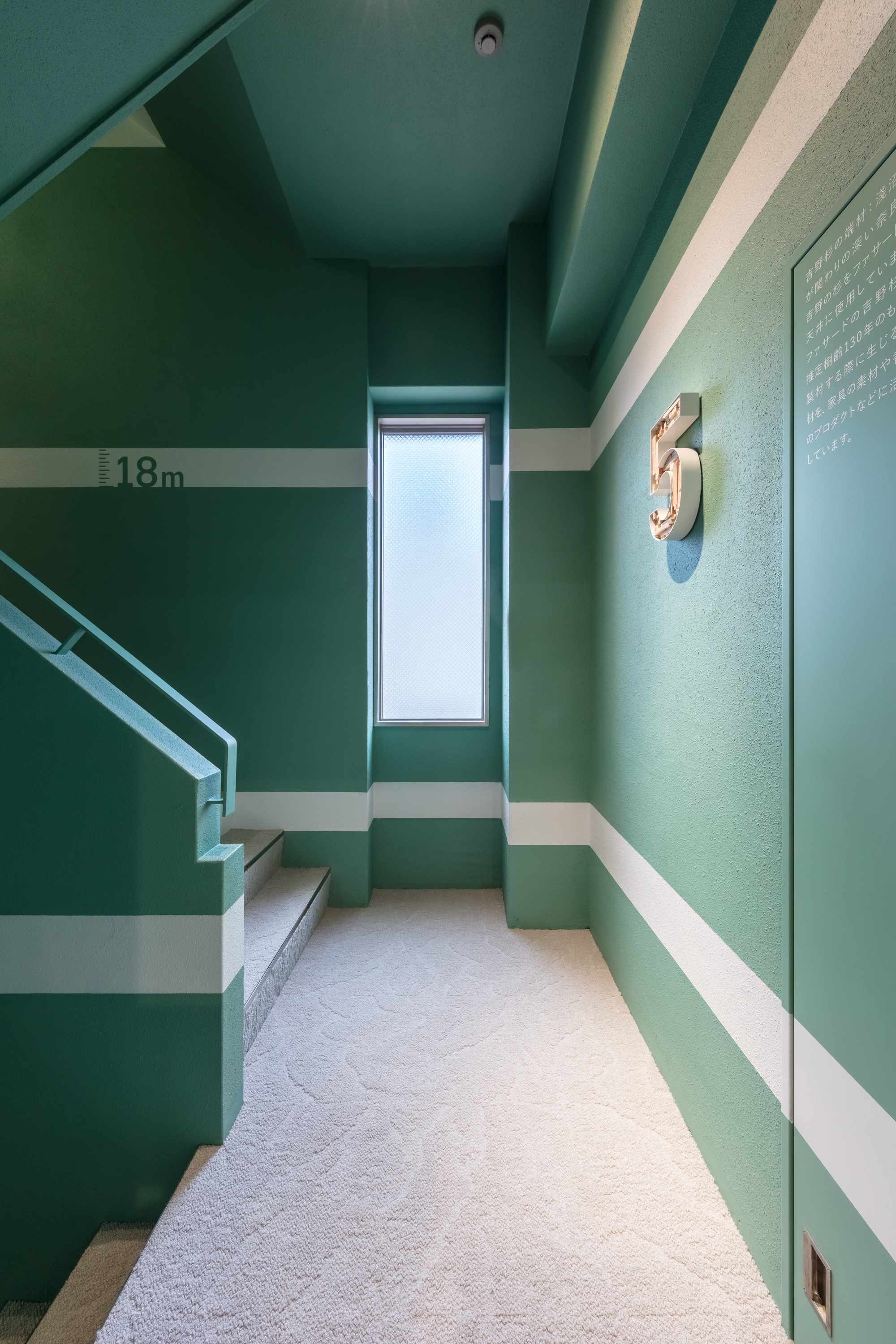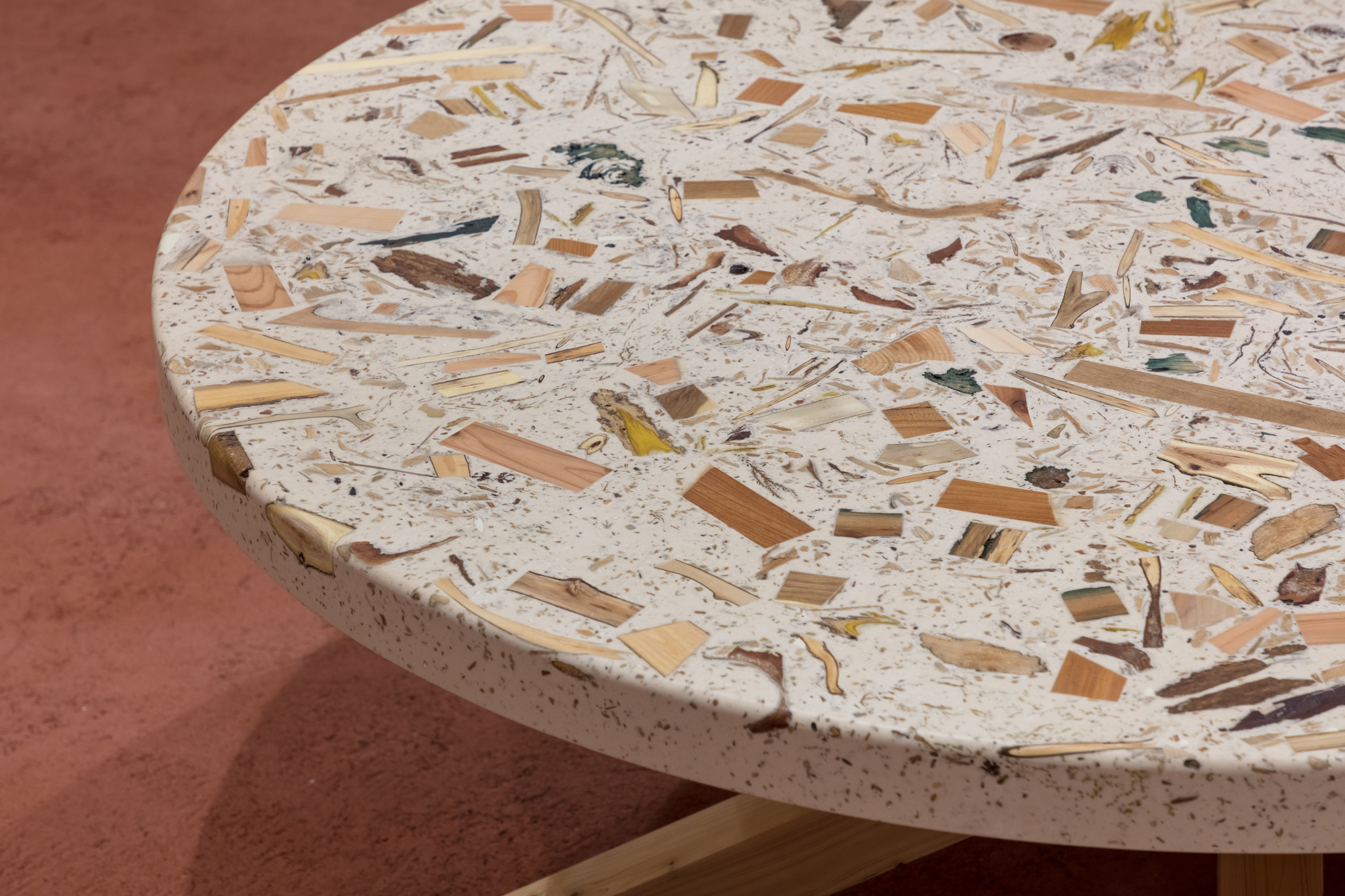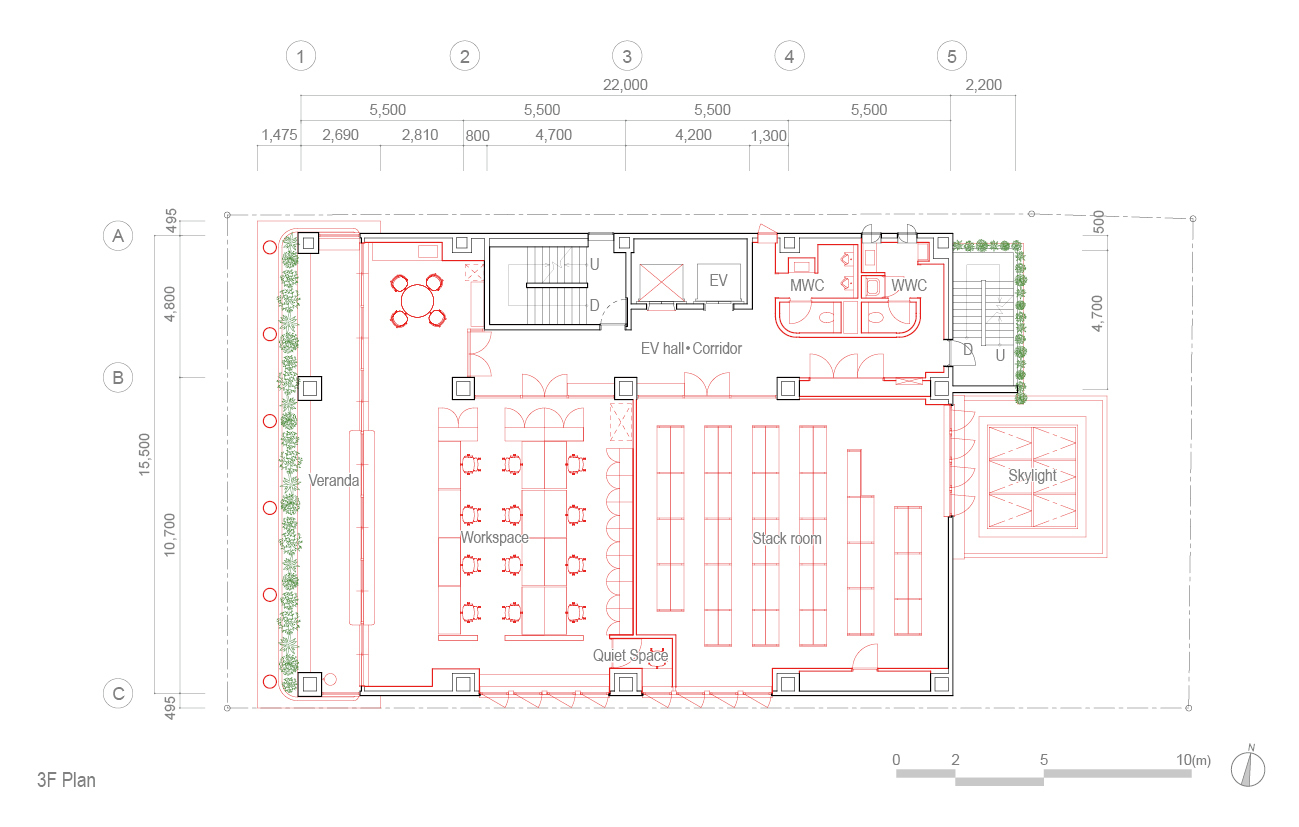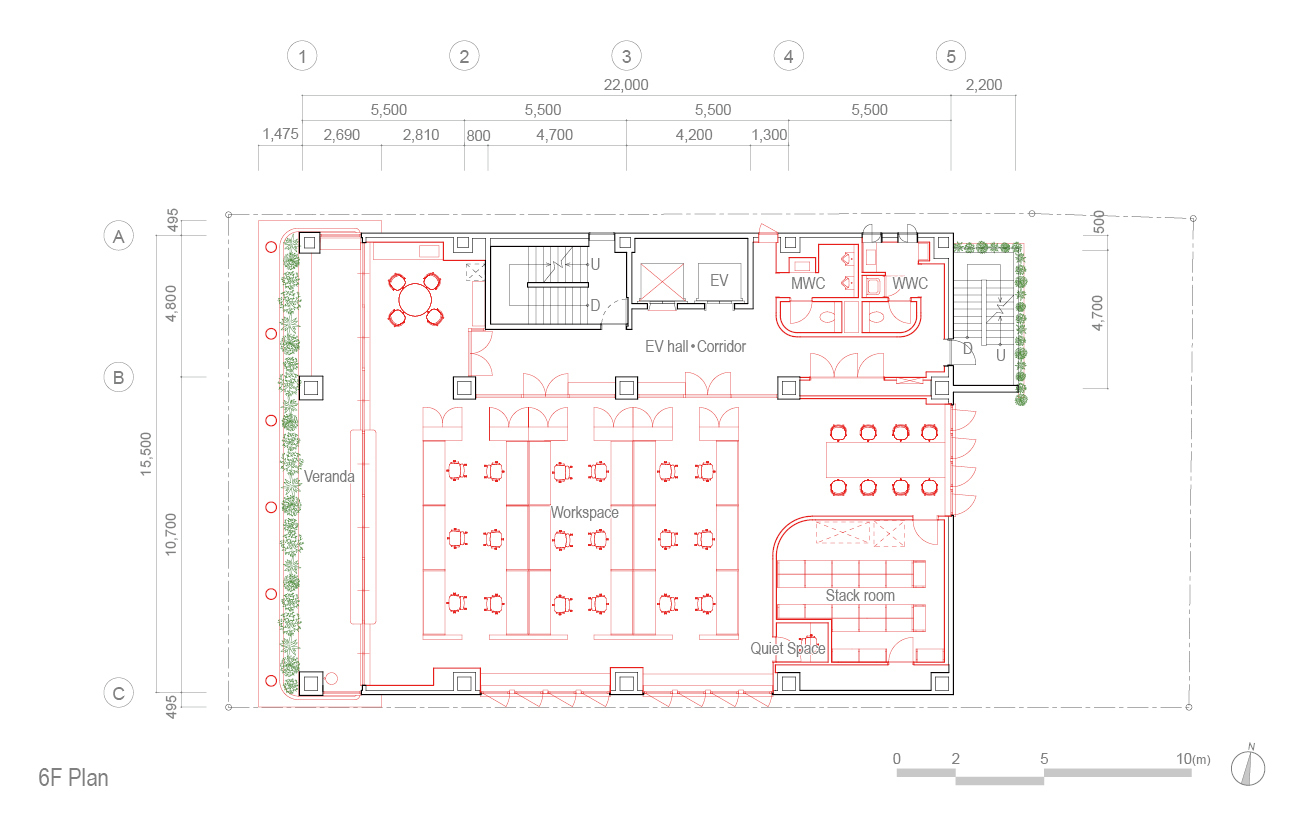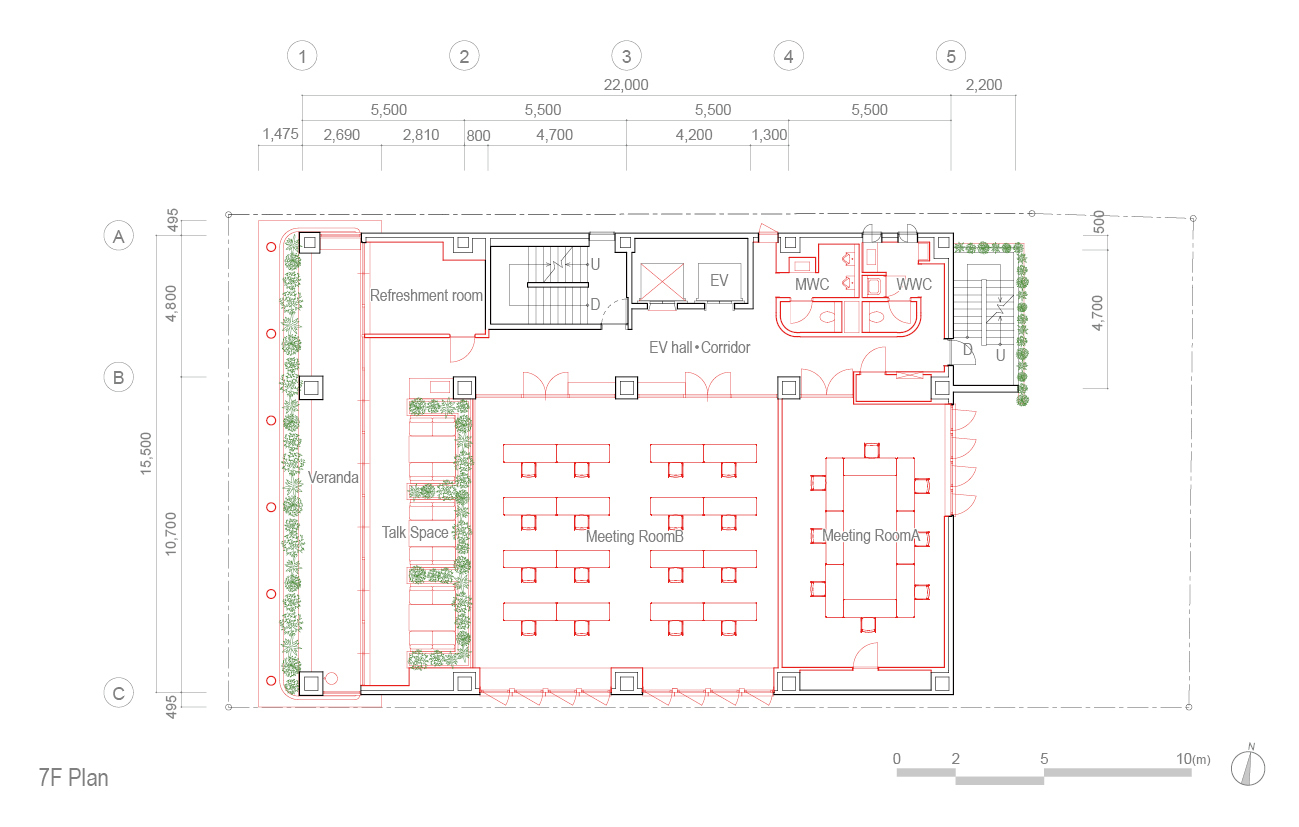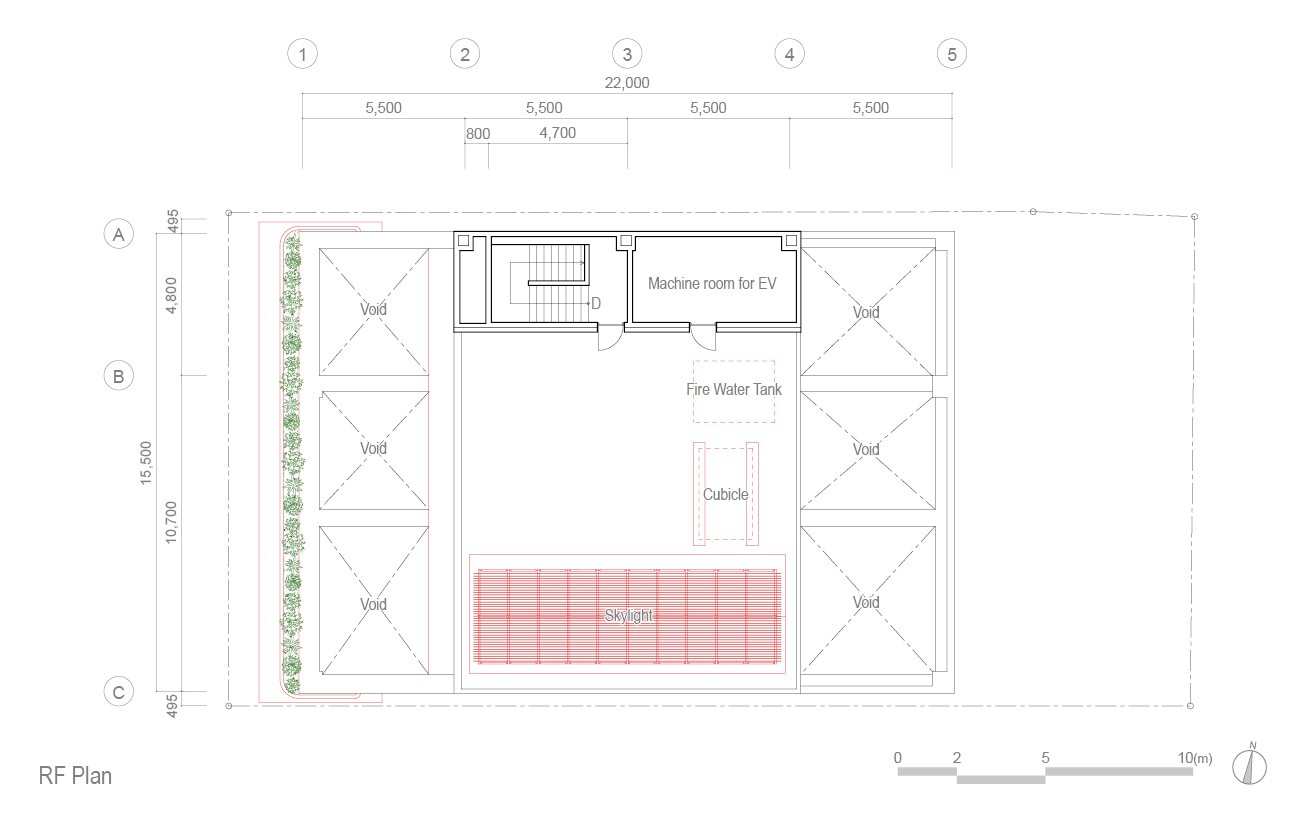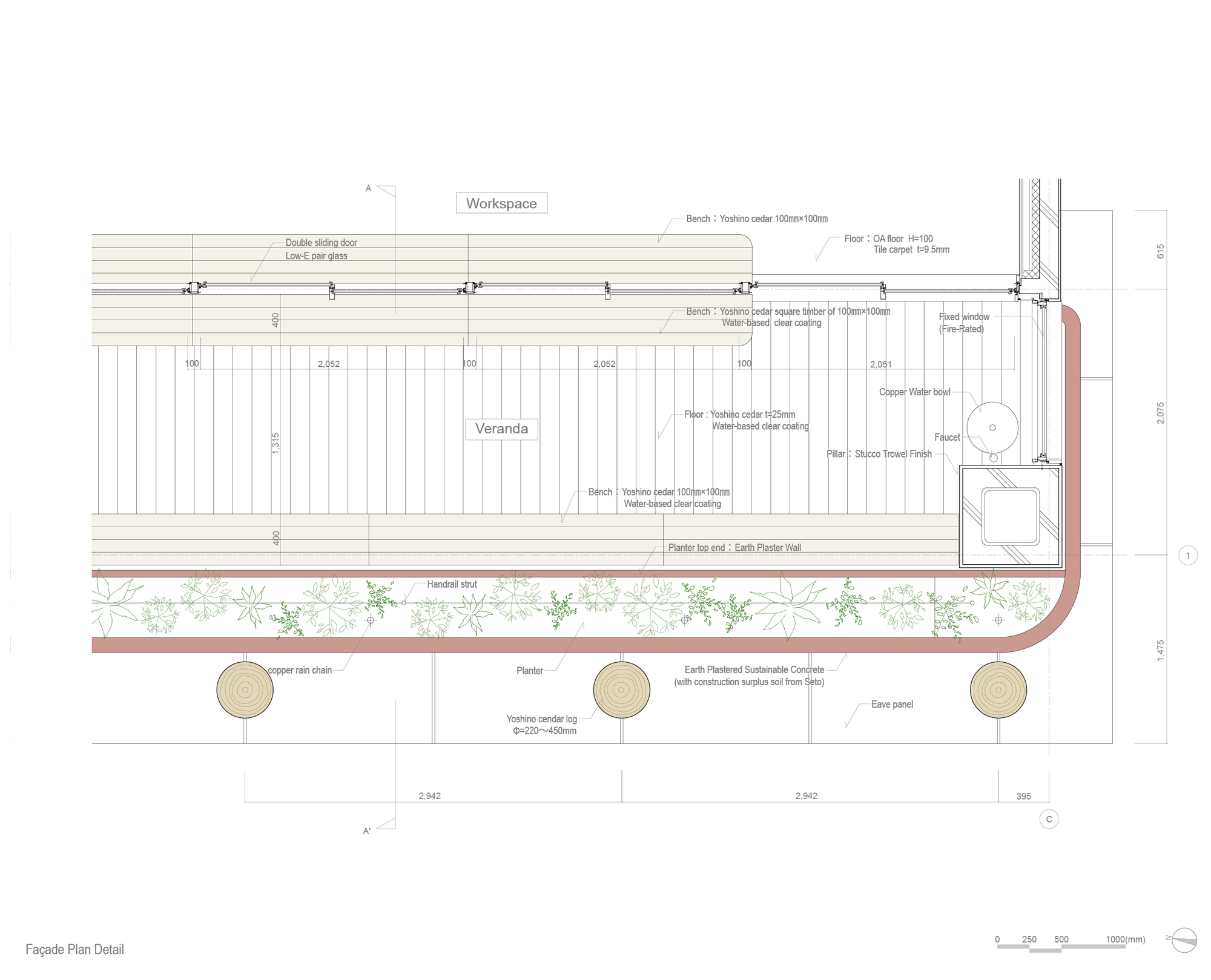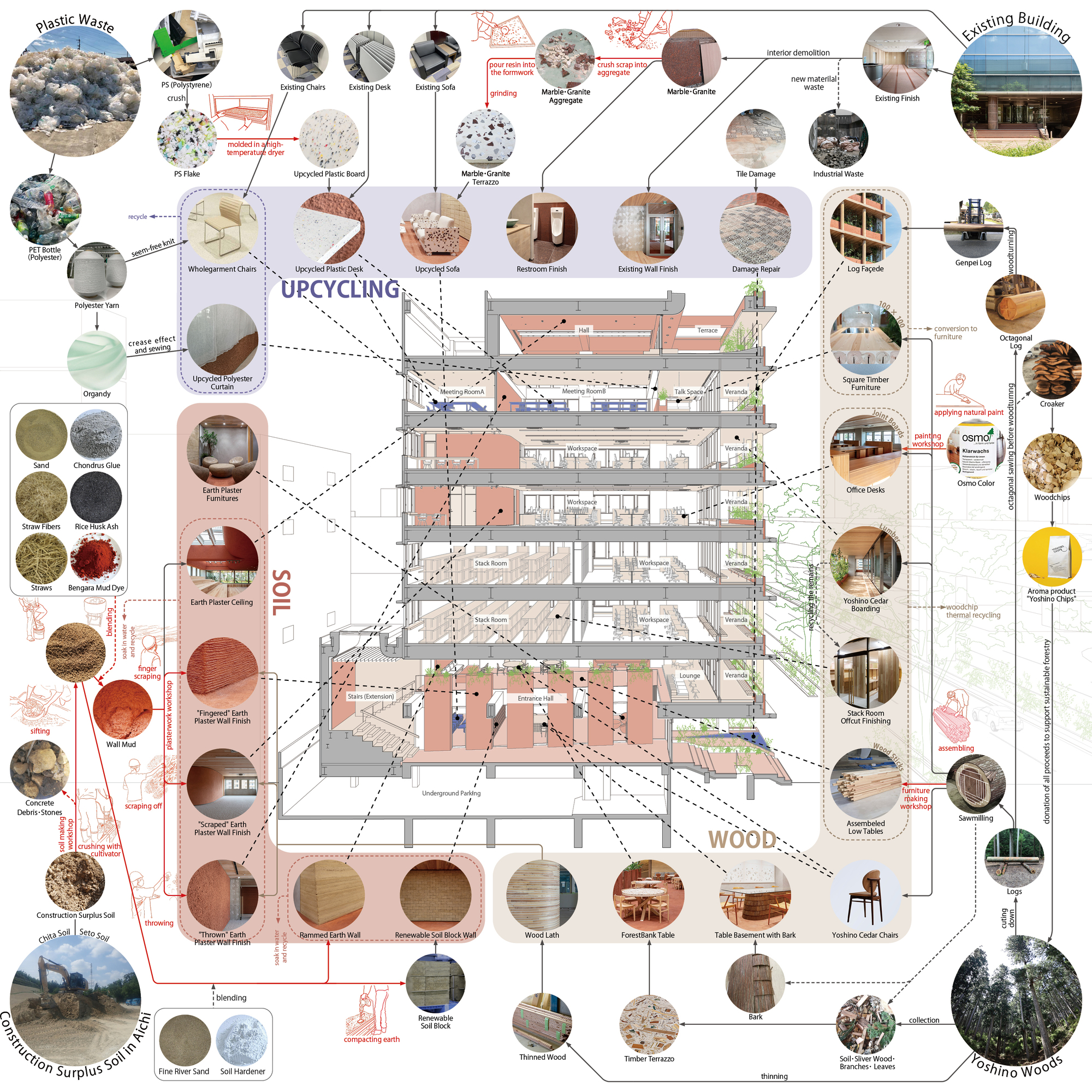Architecture in the cycle. Asanuma corporation, a general construction company, is promoting “GOOD CYCLE BUILDING”, a project to renovate a 30-year-old building into an environment-friendly building as the first flagship of the project. The existing building frame was utilized and modified to increase accessibility to natural light and wind, and new materials were added as much as possible using natural materials such as earth and wood so that the building users can be involved in the construction and maintenance.
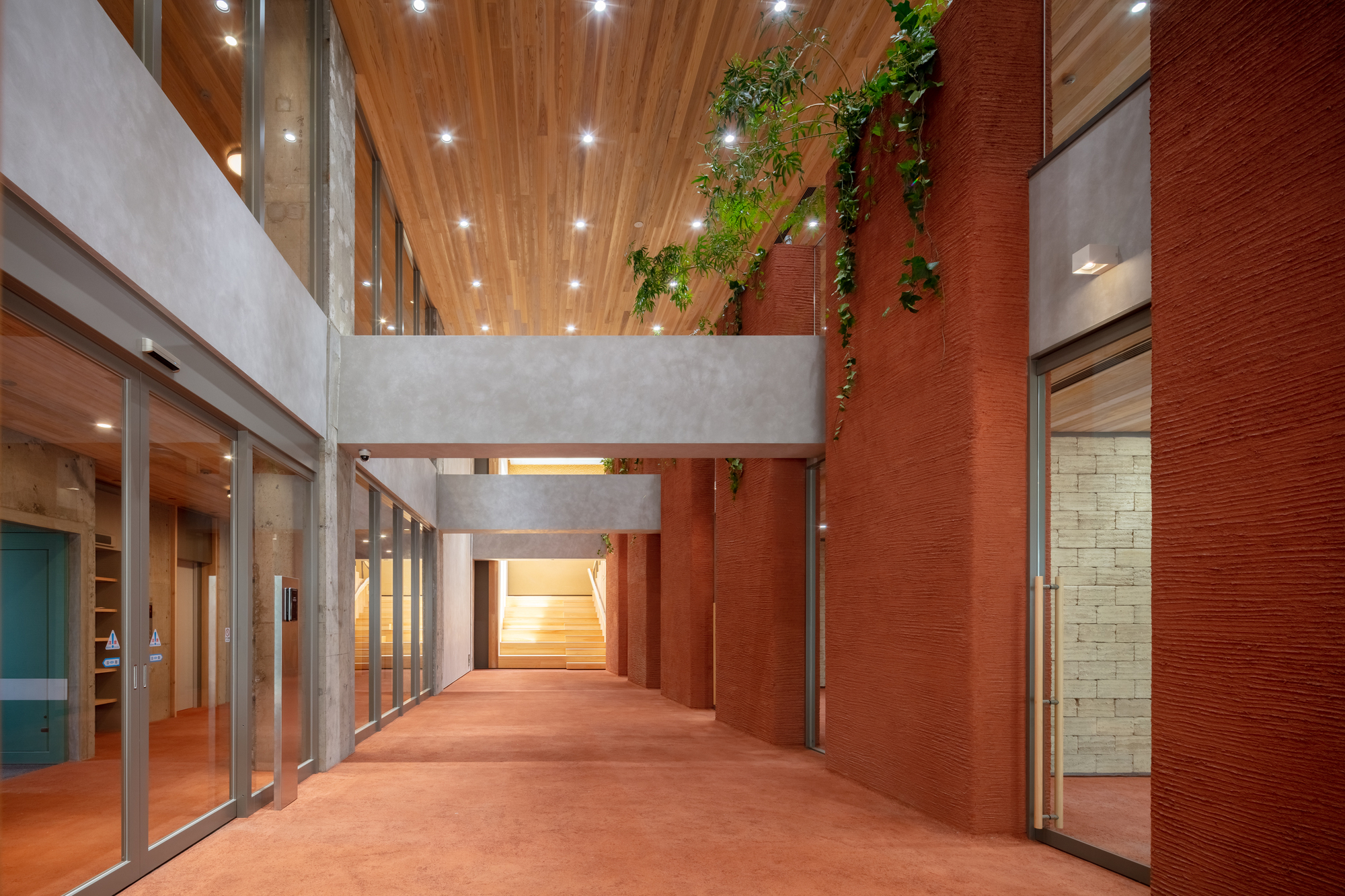
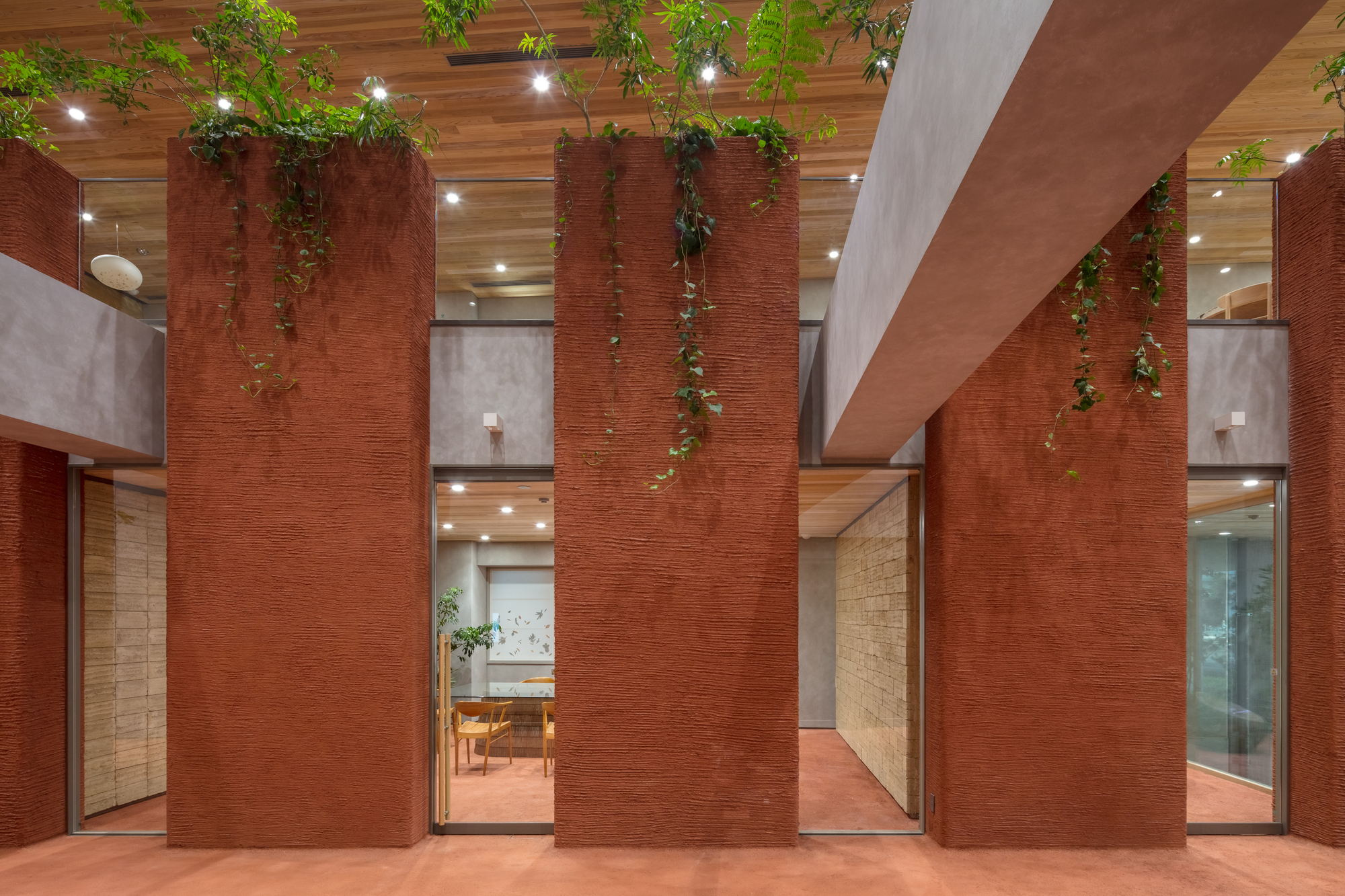

On the workspace floors, the existing windows are set back, the opening and closing forms of the windows are changed, eaves are added, and the core is planned to ensure sufficient daylight and ventilation in all office areas and to control solar radiation appropriately. On the first and second floors, slabs were removed in the east-west direction to create a stairwell, and a stairwell with top lights was added to create an open and bright entrance and lounge even in a dark environment surrounded by buildings. On the seventh and eighth floors, where the surrounding area is open, the slab in the center of the south side is removed to create a conference room and hall where the light from the sky can be fully enjoyed.
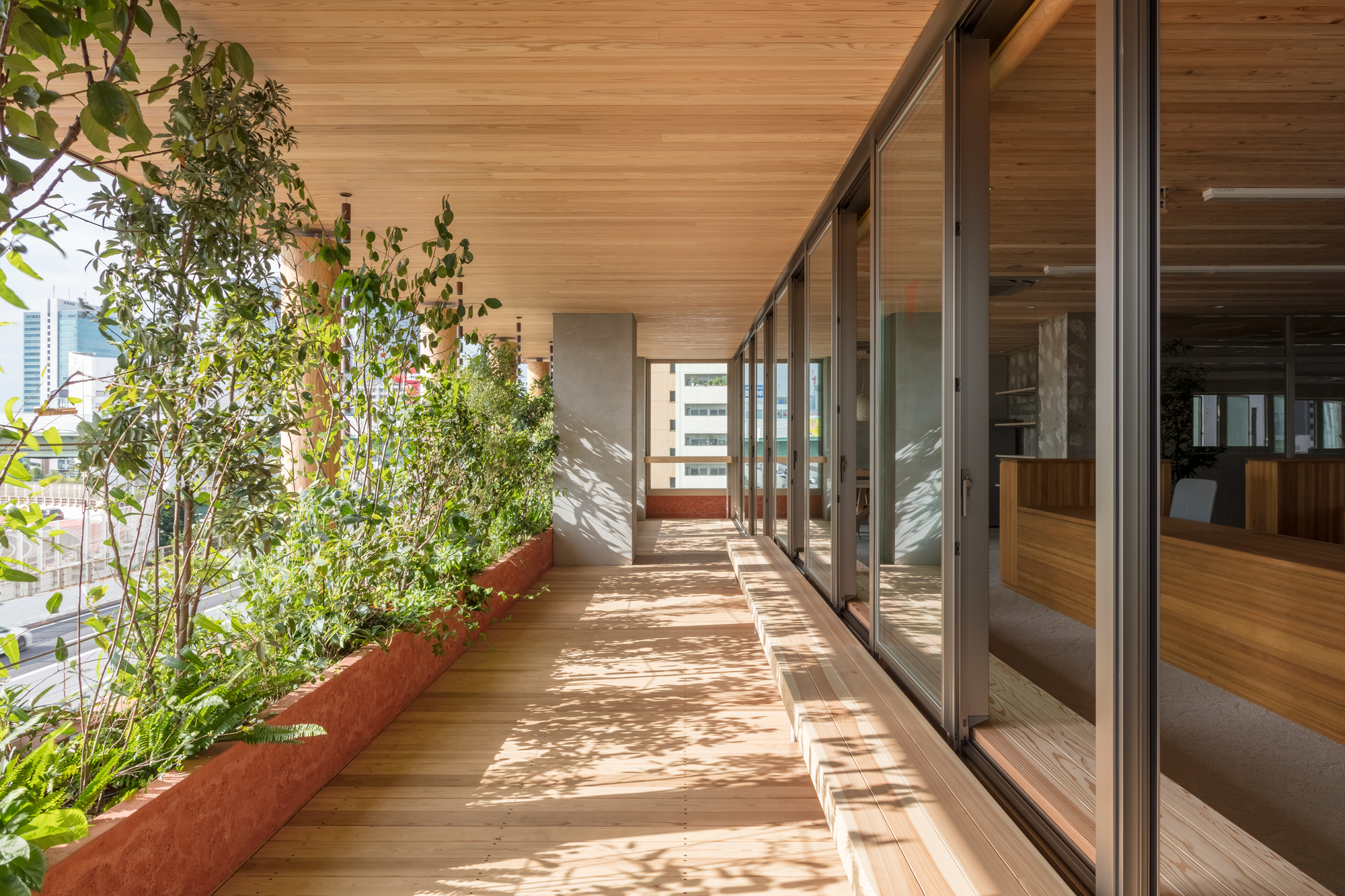
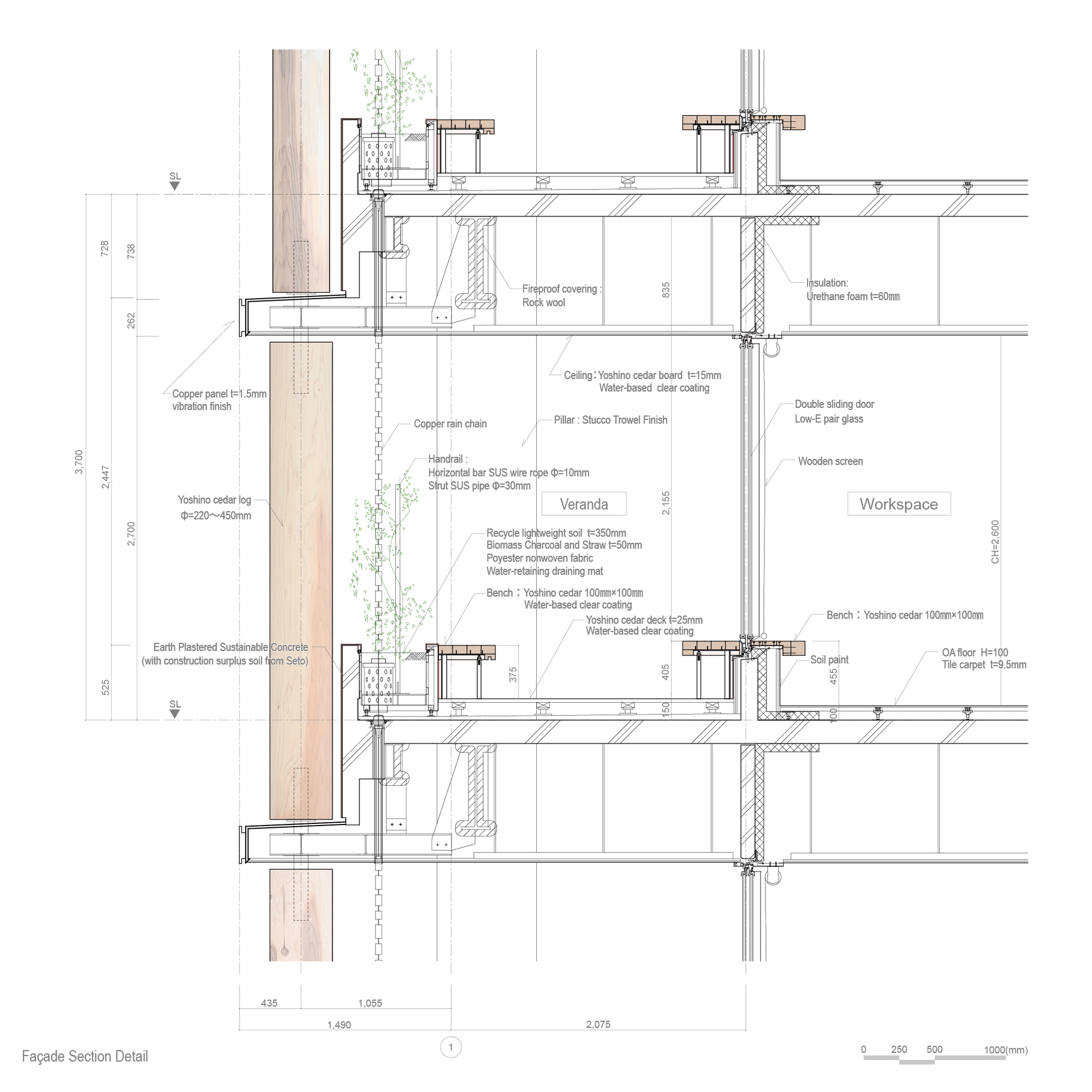

A variety of soil materials were used for the floors, walls, ceilings, and furniture inside and outside the building. For the raw materials, we used leftover soil from Asanuma’s other sites in Aichi Prefecture. By involving the users plastering the wall with soil, they became familiar with the mechanism and became attached to it, and were able to perform maintenance themselves. In addition, it was decided that the finishing method would be possible only if many amateurs, not craftsmen, participated in the process, such as making marks with their fingers or throwing the soil, so that the wall would be expressed “naturally” through human movements.
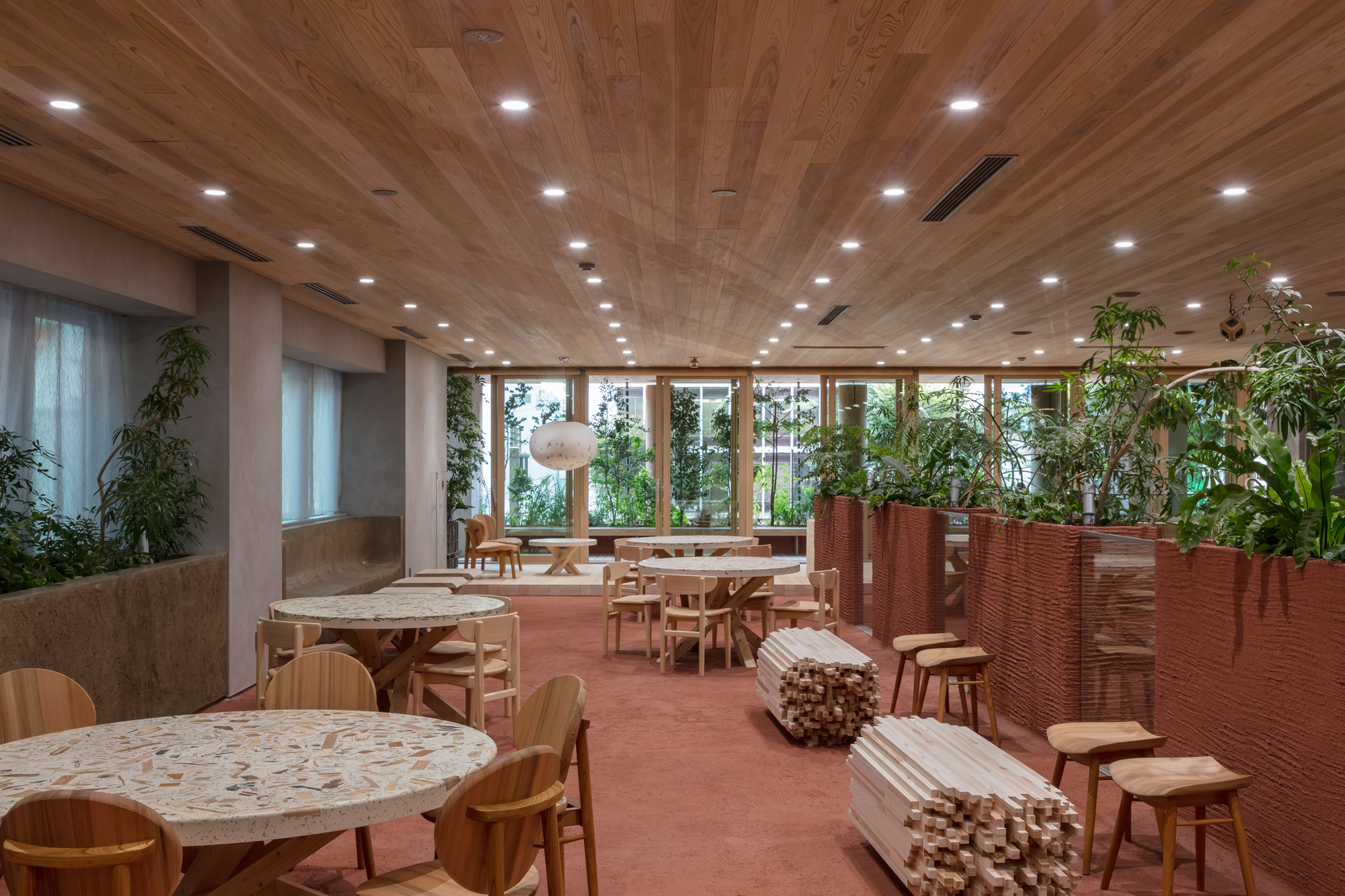
No impurities are added to the earthen wall (in recent years, petroleum-derived materials and cement are often added to improve durability) so that it can be reused as a material for repainting in the future and eventually returned to the earth. Sugi (Japanese cedar) from the Yoshino forest in Nara, which Asanuma corporation has a long-standing relationship with and manages sustainably, was used for the interior and exterior of the building, as well as for fittings and furniture.
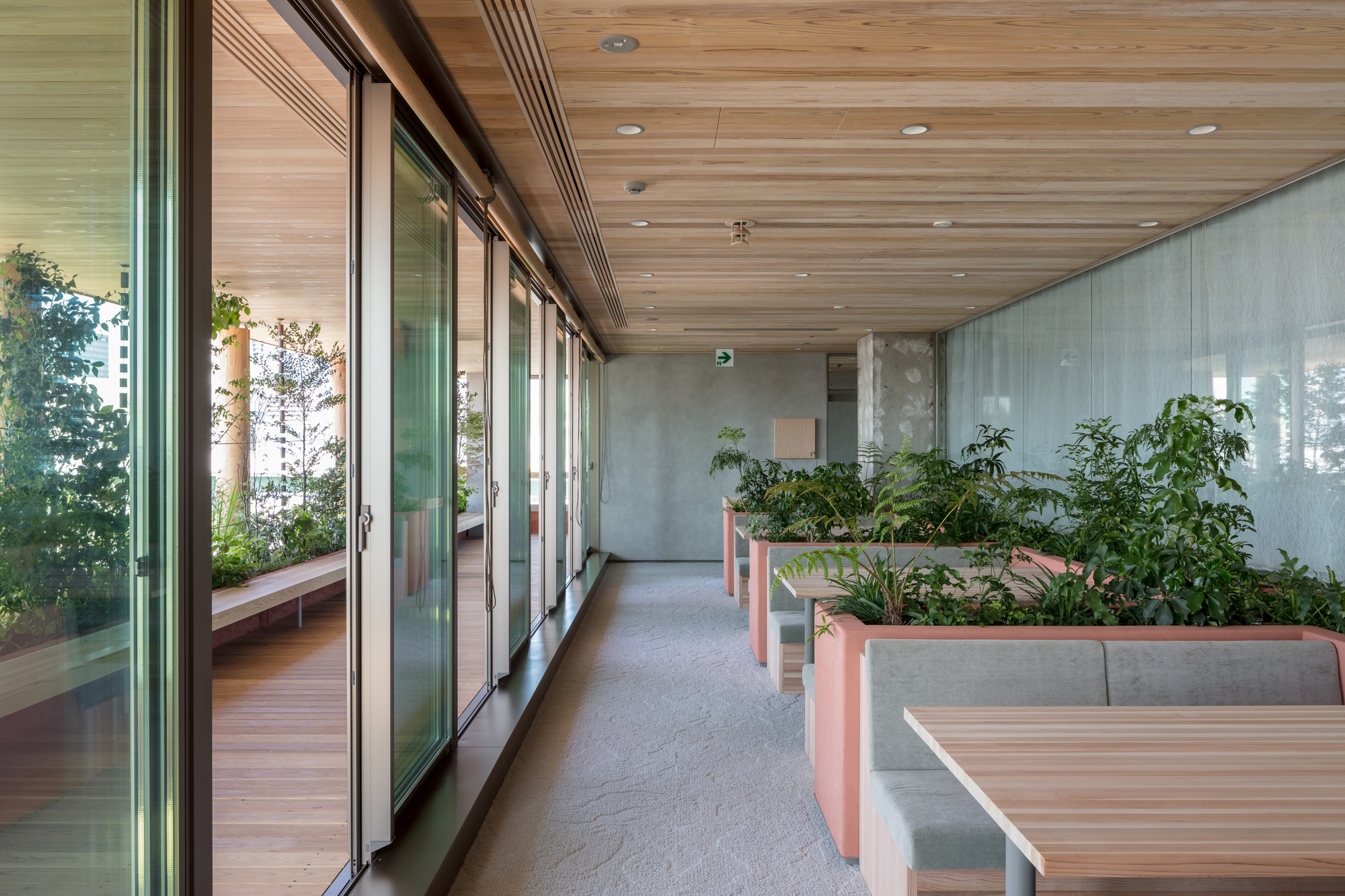
The front façade is made of Yoshino cedar logs of the largest possible diameter from a single cedar tree, which become smaller as they reach the upper levels. This is intended to allow the viewer to experience the trees as they would naturally stand, and to minimize the amount of scrap wood generated, maximizing the potential for future use after drying. In addition, we intend to minimize the amount of scrap wood generated and maximize the possibility of future use after drying.

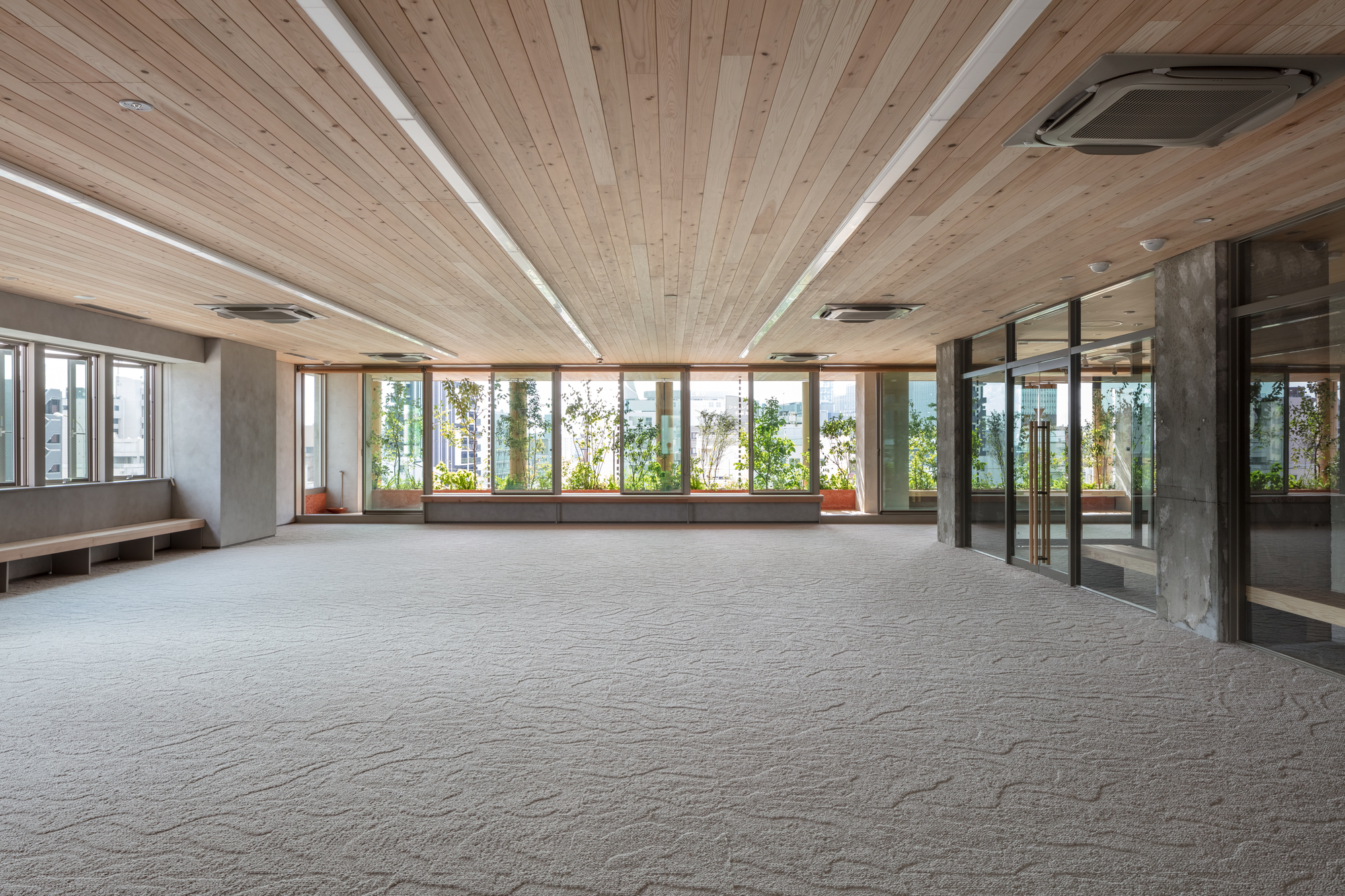
The scrap wood that is still generated will be accumulated and used to make furniture and products that allow people to enjoy the scent of cedar. Stones and other materials used in existing buildings that could be cleanly removed were reused as interior surface materials, while others were crushed into small pieces and hardened with plaster to be used as surface materials for furniture.
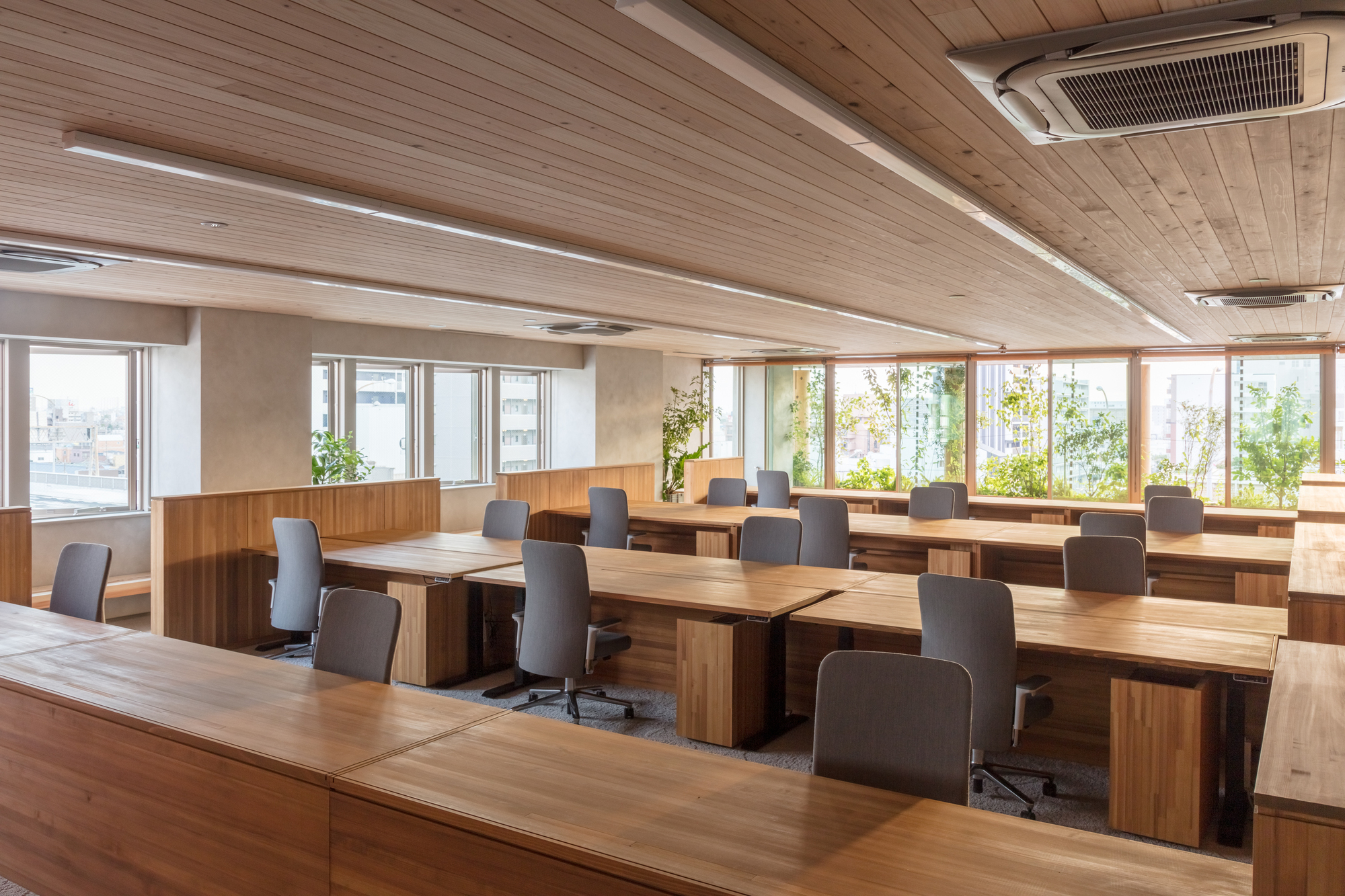
We have also combined existing furniture with surface materials made of waste plastic flakes that have been crushed and hardened by heating, wrapped existing furniture in knitted fabrics made of recycled polyester yarn from plastic bottle waste (no sewing was used to avoid producing scraps), and made curtains from recycled polyester textiles. We also tried to utilize urban waste as a resource.
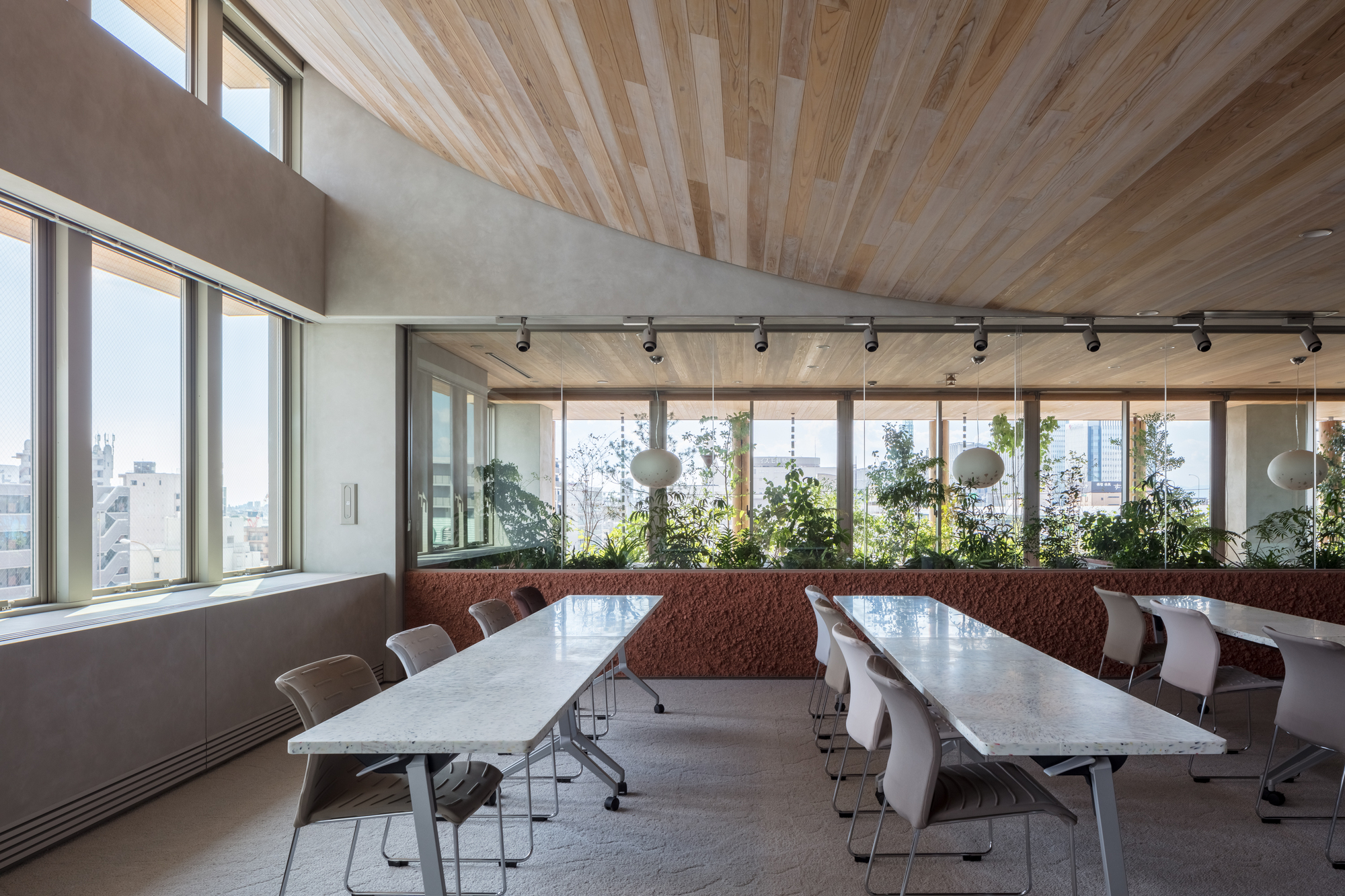
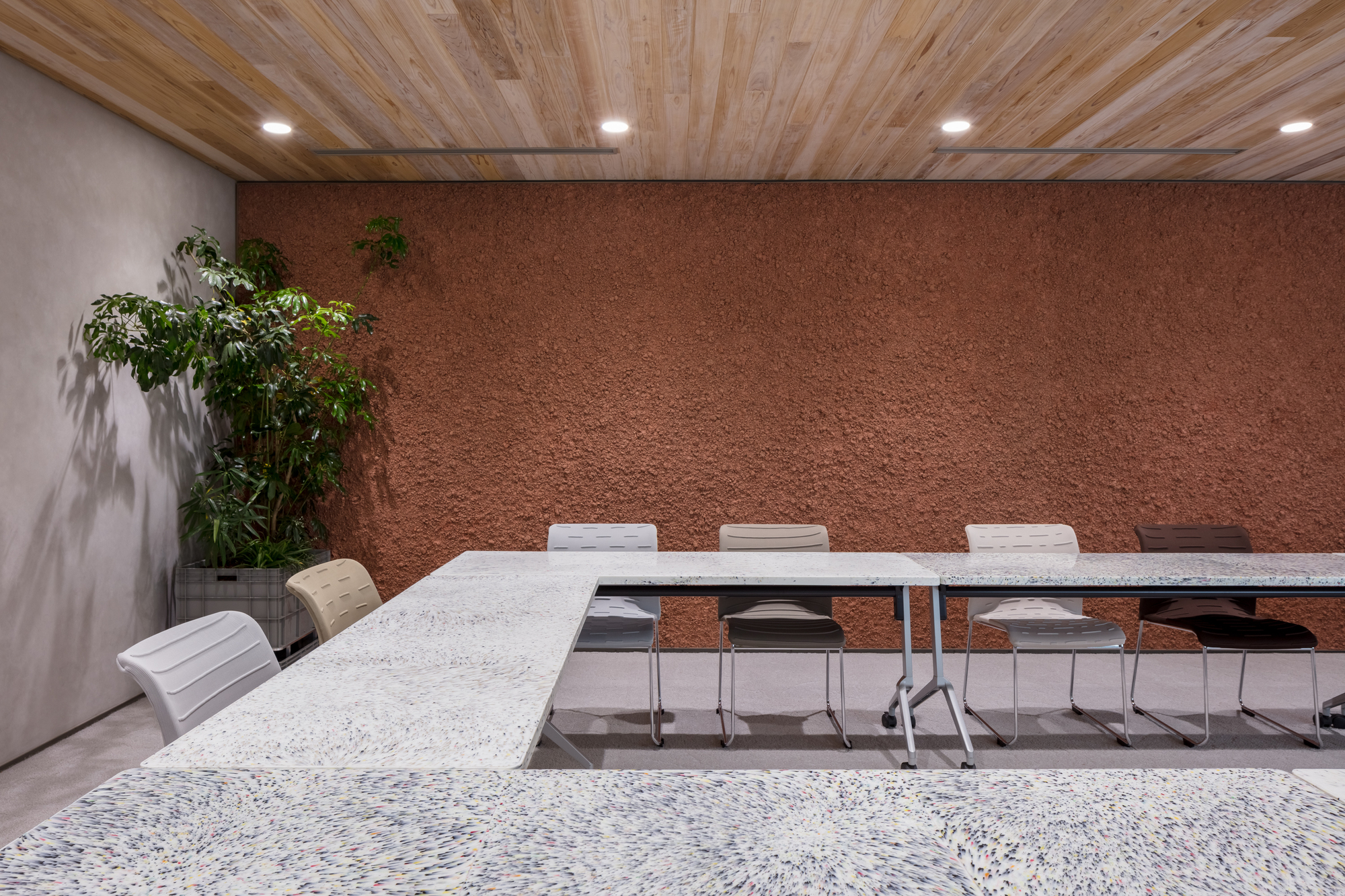
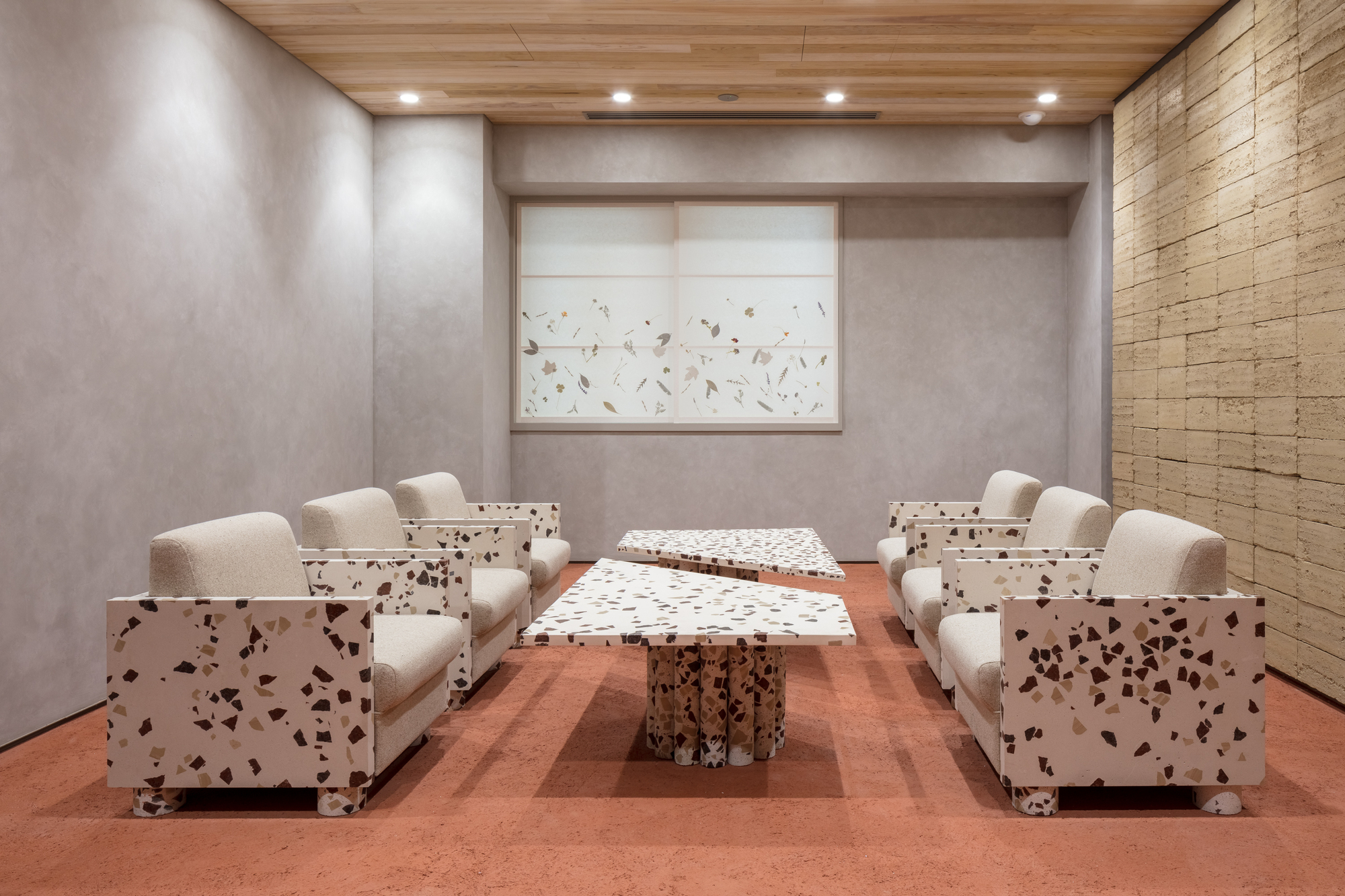
Architecture is a transit point in the flow of materials and has the aspect of a “material depository. In order for materials to be up-cycled and continue to be used, it is important to use natural materials in a way that they can be separated from artificial materials, so as to maximize the possibility of subsequent use, and to eventually return them to the earth.
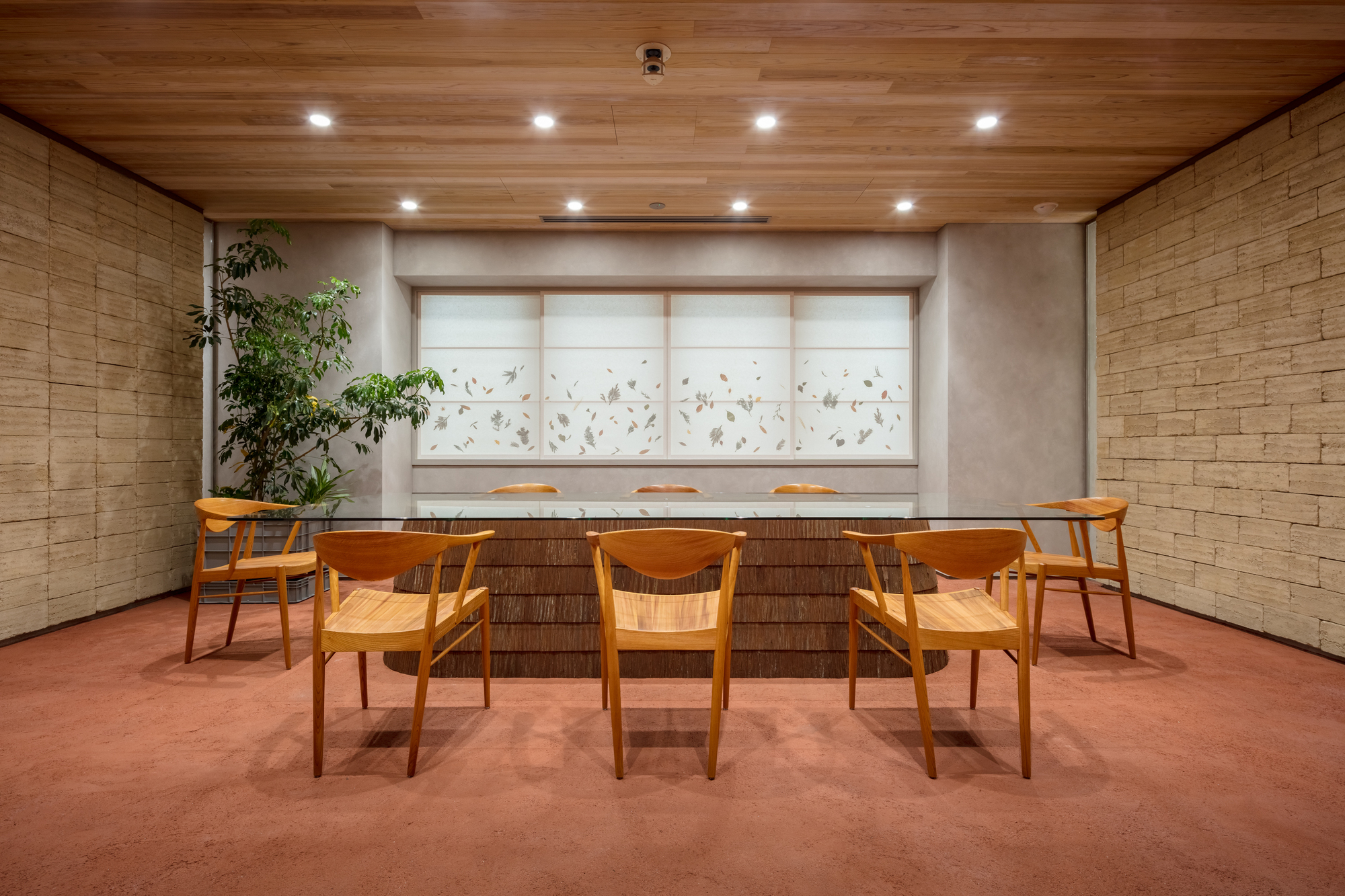
As for man-made materials, it is necessary to make the most of the characteristics of existing materials and to transform them into new materials through processing. This project is an attempt to reconstruct buildings as a key element of this new material flow in the city, and to reposition architecture in a cycle that is good for people and the earth, by creating a delightful environment that is connected to the changing nature of light, wind, soil, trees, and plants.
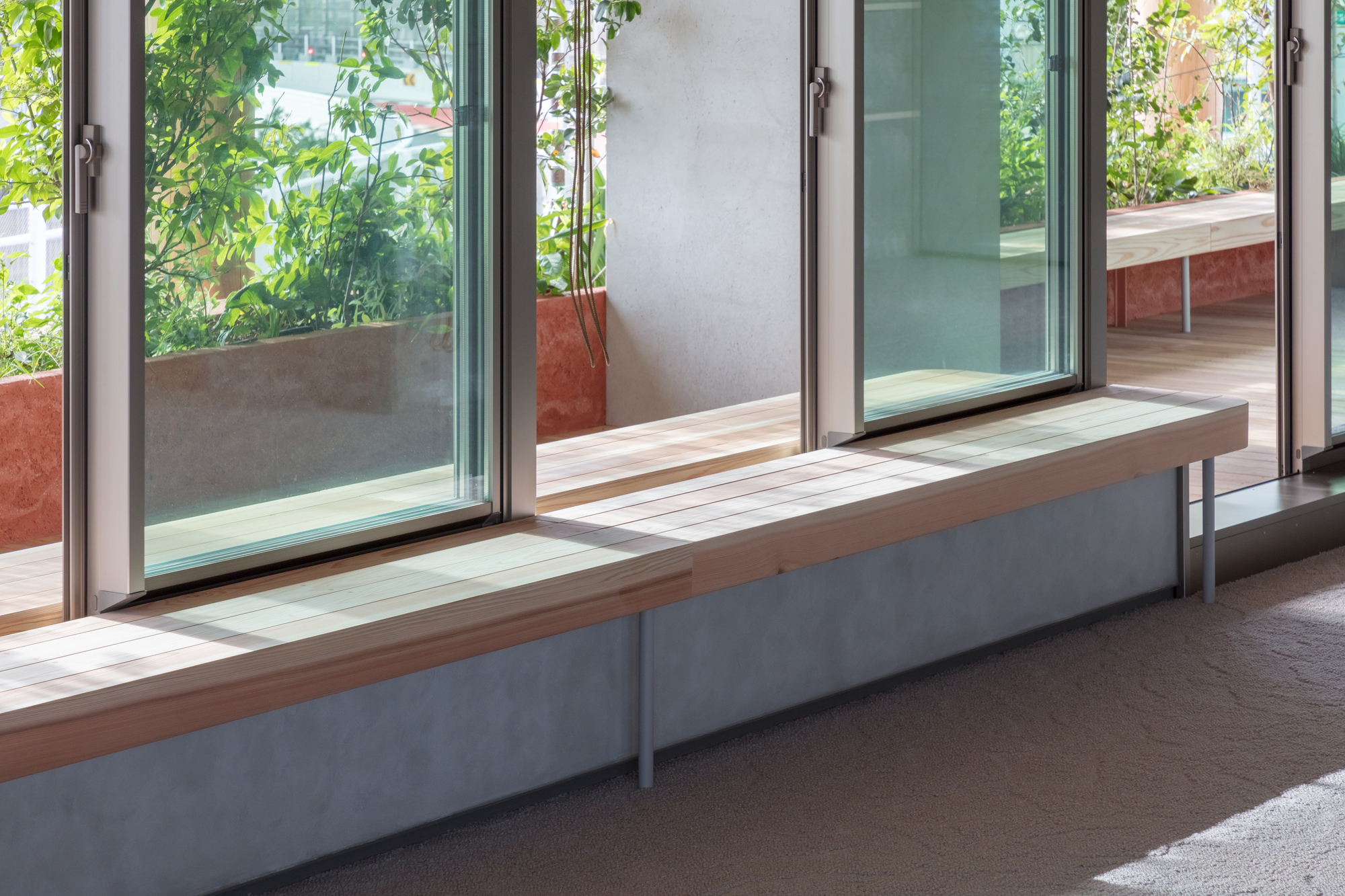
▼项目更多图片
